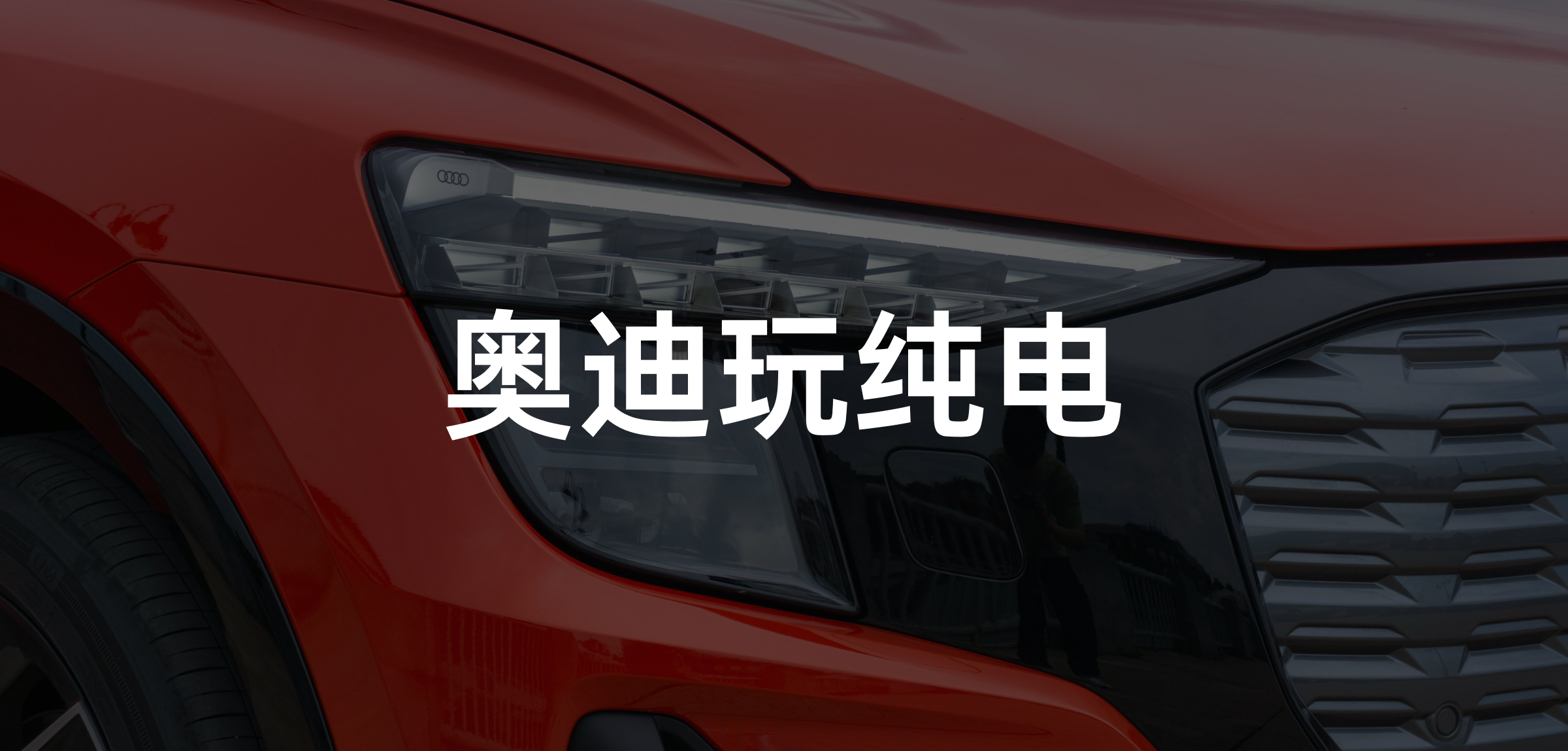In 2019, the National Energy Administration issued a series of policy measures to encourage the consumption of new energy vehicles. Audi took advantage of the opportunity and released the domestically-produced Q2L e-tron and the imported e-tron on the Chinese market. The former is based on the transverse engine MQB platform, while the latter is based on the longitudinal engine MLB EVO platform. In other words, both of these previously released pure electric products are based on oil-to-electric transformation.
However, with the support of luxury brands, a certain amount of terminal discounts, and the nationwide exemption from purchase tax and issuance of green license plates, these cars have maintained stable sales in first-tier cities. However, as an Audi brand, we have always been looking forward to a truly pure electric model. Therefore, this year, we welcomed the third pure electric model from Audi on the Chinese market and the first pure electric model from SAIC Audi – Q5 e-tron.
The most electrified appearance is the green license plate
The appearance of SAIC Audi Q5 e-tron is very characteristic of the family, and it can be seen at a glance that this is an SUV designed by Audi. In other words, SAIC Audi Q5 e-tron did not undergo significant changes in appearance due to electrification.
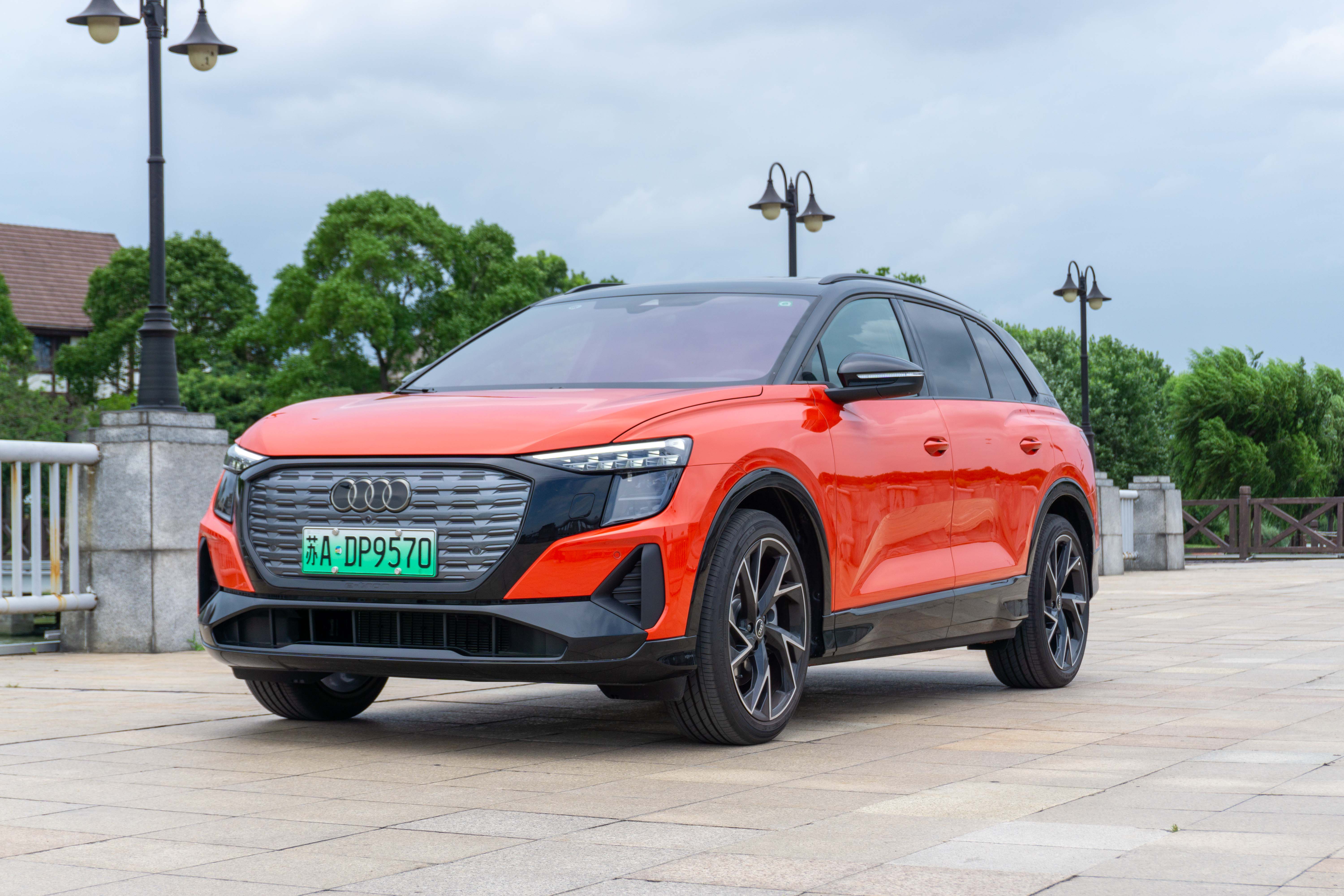
The front face still adopts the family-style 8-sided grille design, but the entire grille is completely closed, and the air outlet for the whole vehicle’s ventilation is left at the bottom of the front bumper. The overall front face design of Q5 e-tron is relatively close to the style of a gasoline car and has a sense of technology in the era of commonly used simple and closed front faces.
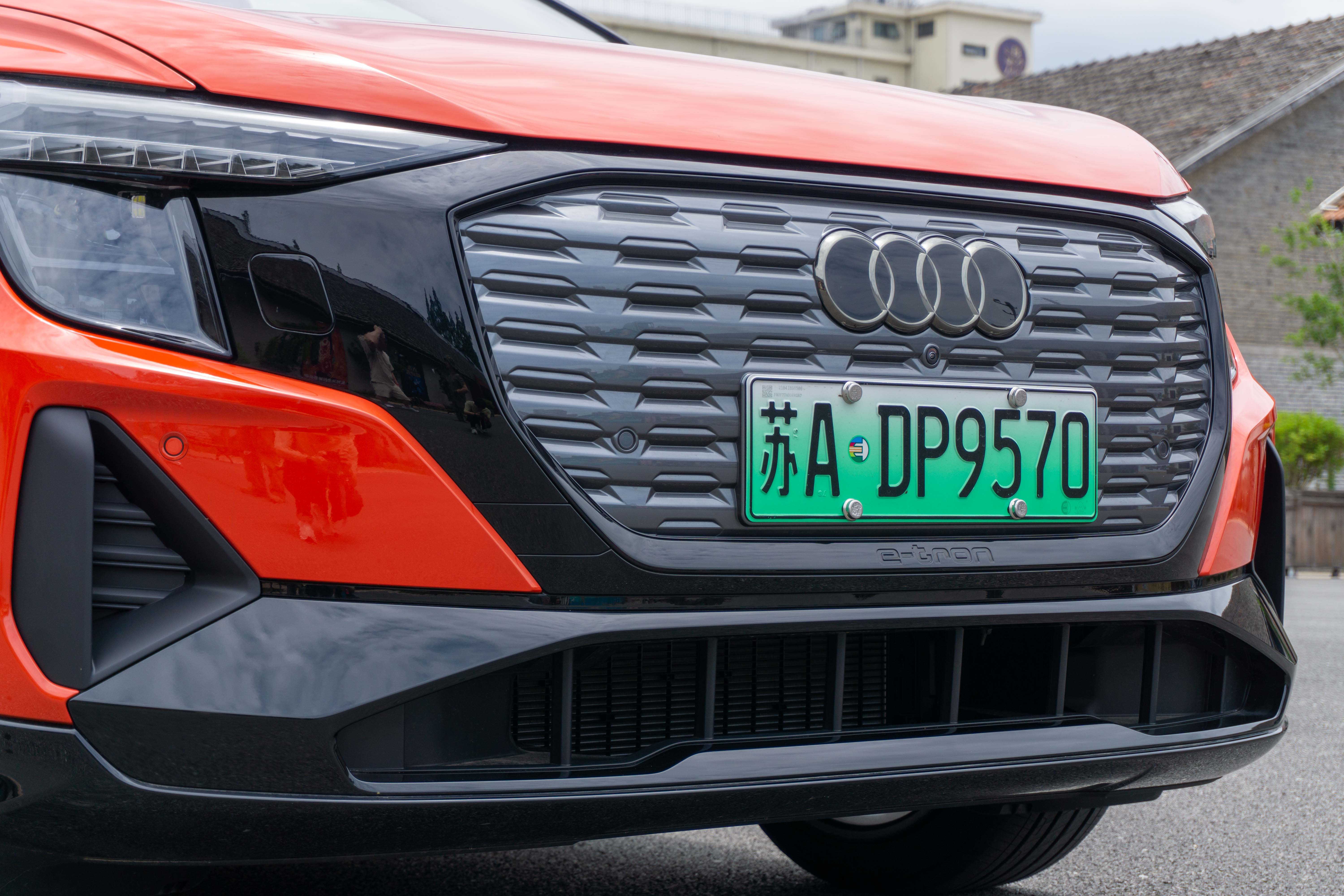
The main point of the technology sense created by the front face is the LED daytime running lights that can be arranged independently. This is one of the few split-type headlight designs adopted by Audi in the past decade. The upper square light group inherits Audi’s headlight design and functions as daytime running lights and turn signals. Without a lens headlight group, people will feel that the Q5 e-tron lacks the charm of previous Audi models.
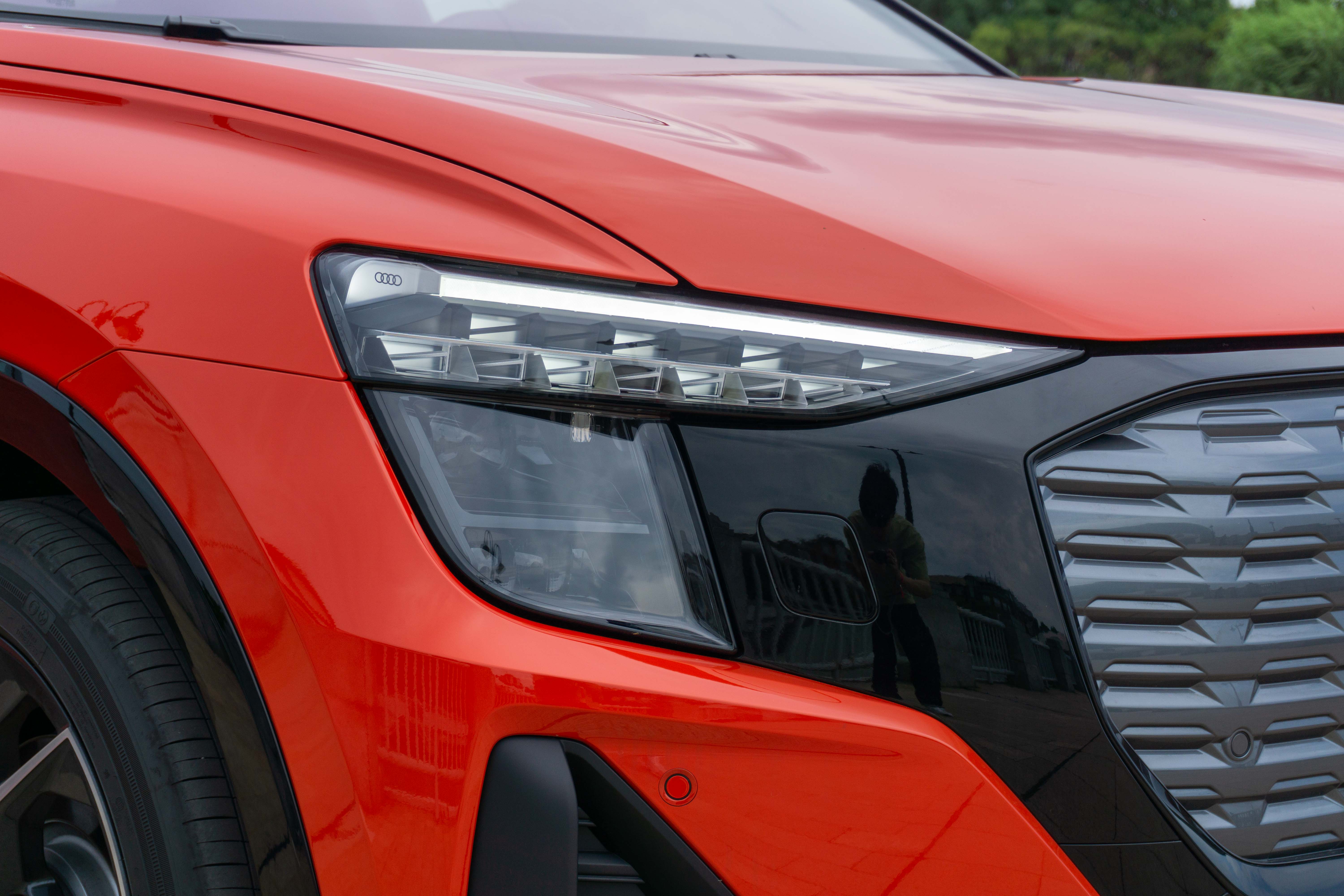
The low beam and high beam headlights are integrated under the daytime running lights, which are fused with the frame of the 8-sided grille. Whether it is a luxurious or a sports version, it has a good hiding effect.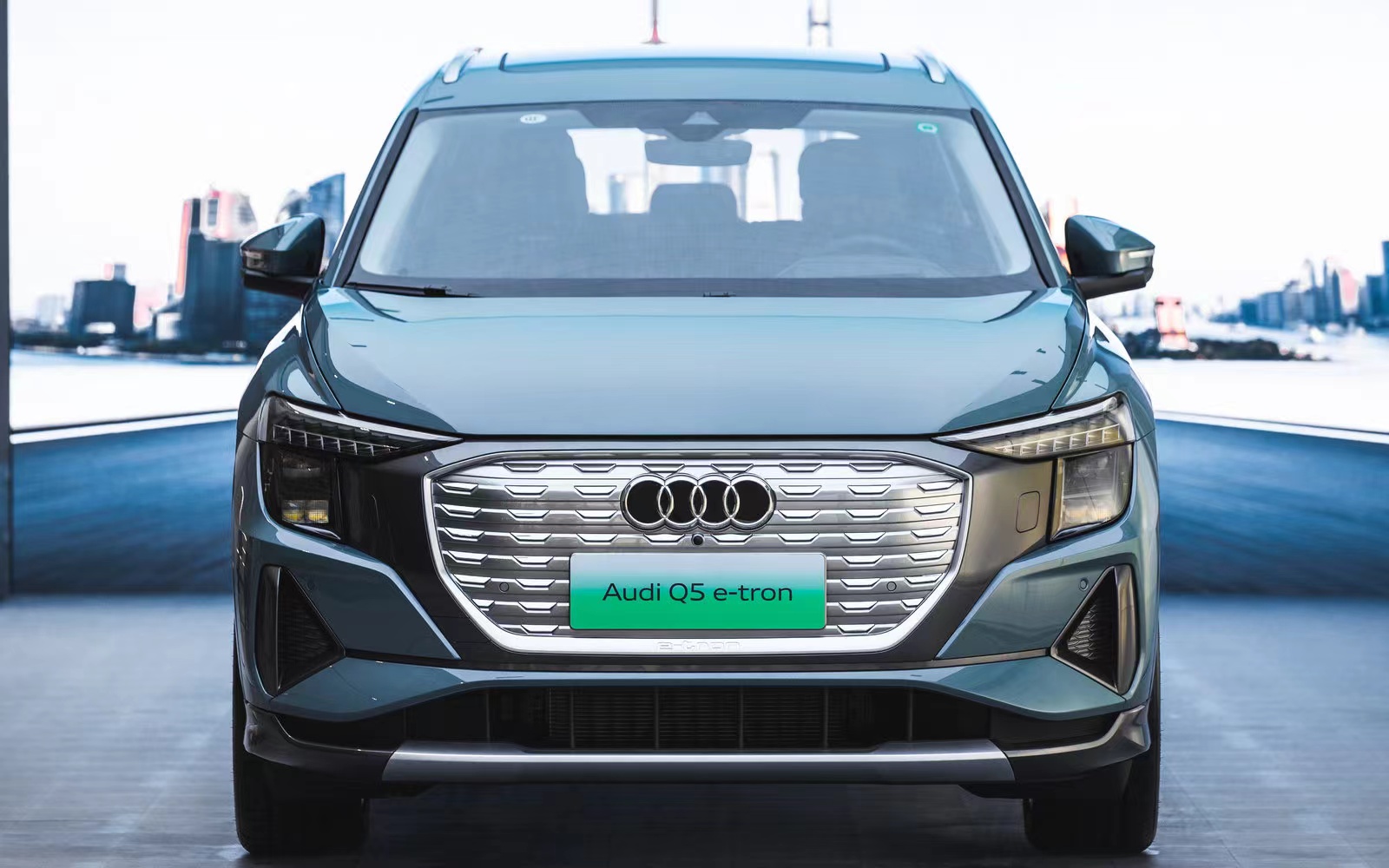
When it comes to the side of the car body, you will find that the body of the Q5 e-tron is very large, which is not the same level of product as the current FAW-Audi Q5L. The fuel Audi Q5L from the MLB EVO platform is a medium-sized SUV, while the 4,876 mm length of the SAIC-Audi Q5 e-tron puts it directly into the category of mid-to-large-sized SUVs, although it does not have the “L” extension suffix of the Q5L currently on sale.

Since the SAIC-Audi Q5 e-tron is based on the Volkswagen MEB platform, it has the same wheelbase as the same-level SAIC Volkswagen ID.6 X, reaching 2,965 mm, which is much higher than that of a medium-sized SUV at the same price, but shorter than that of the mid-to-large-sized five-seat SUV Cadillac LYRIQ. As for the interior space, we will actually experience it in the car later.
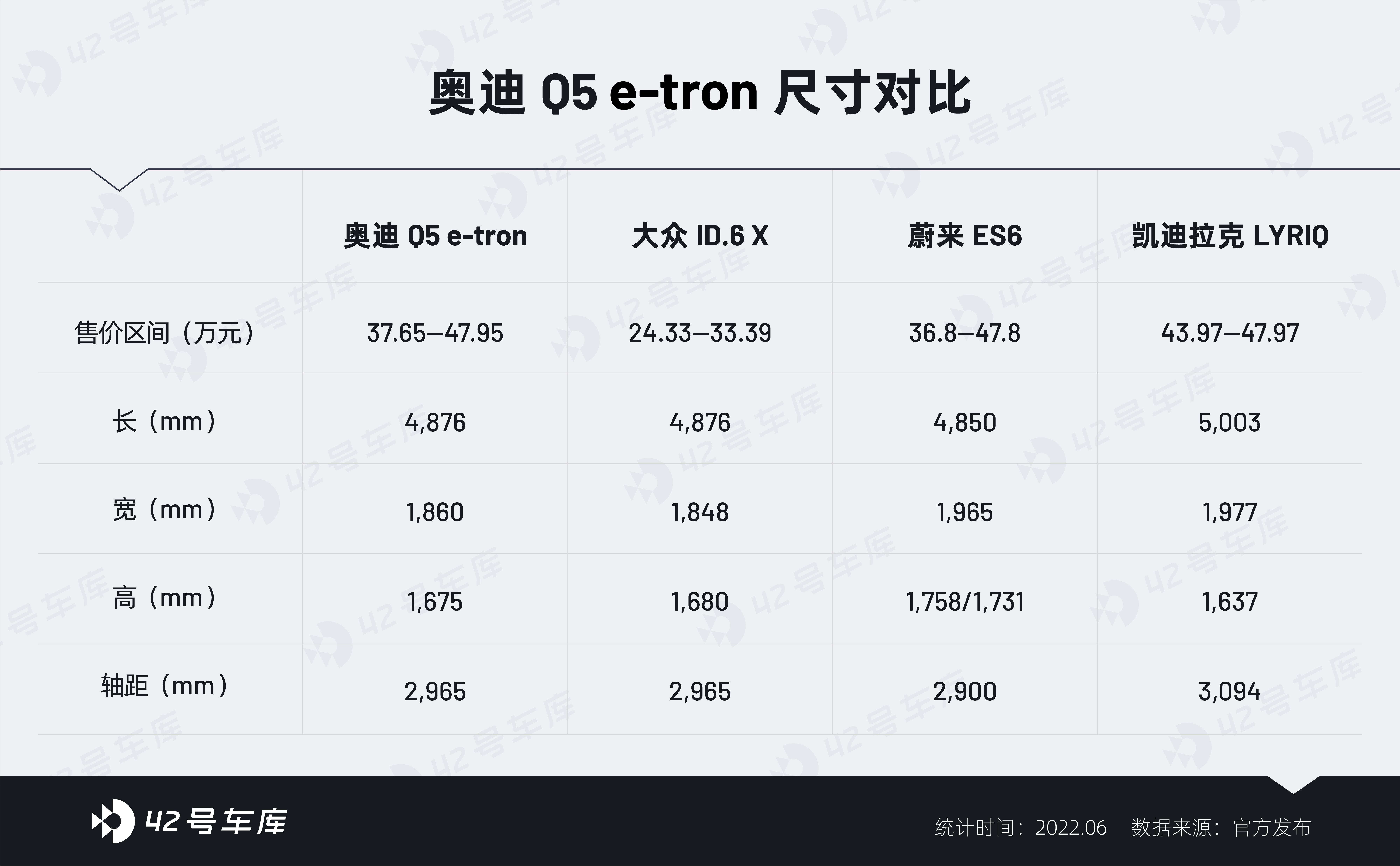
The tail of the Q5 e-tron, like other Audi family models, uses a through-type taillight. The overall tail design is relatively ordinary.
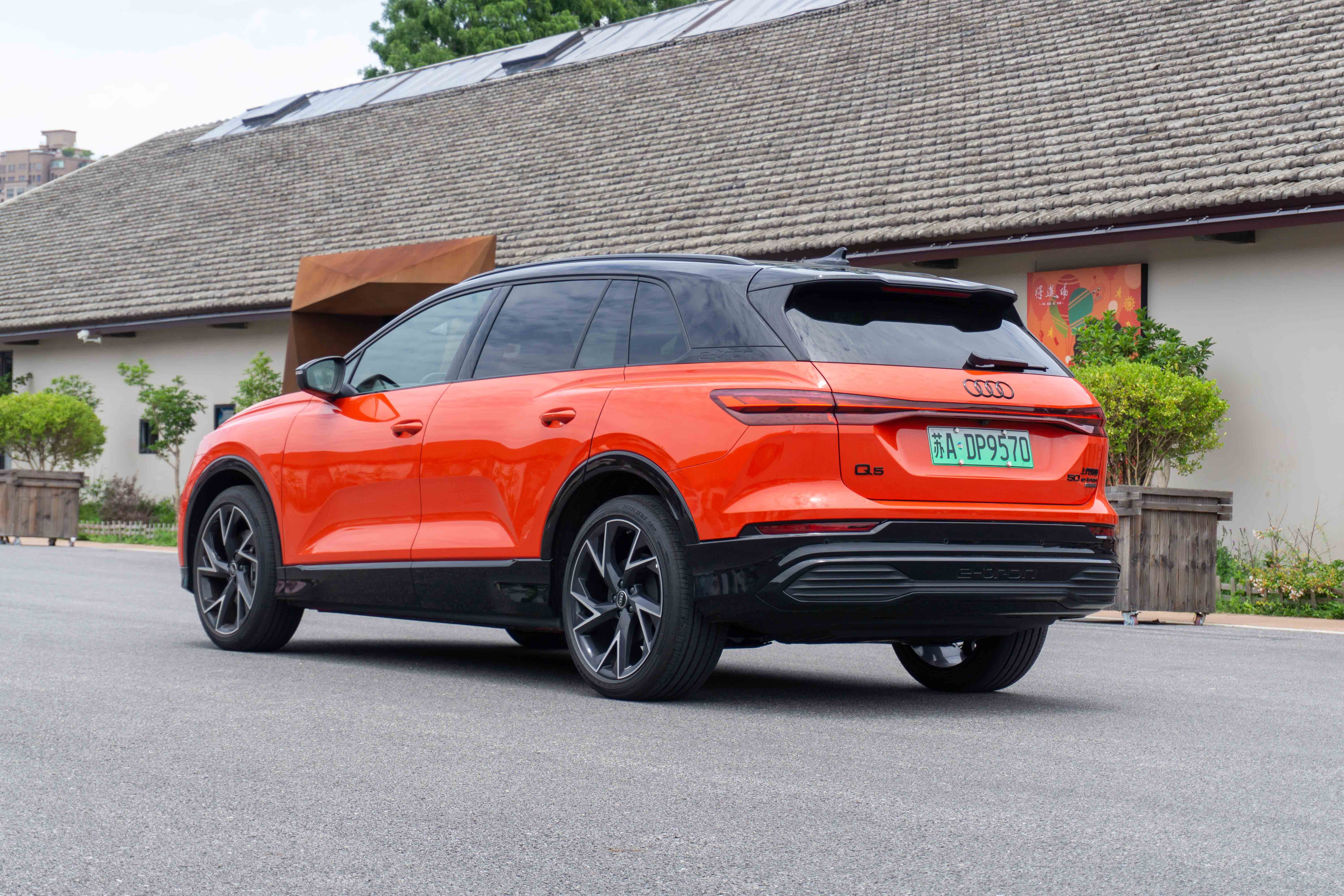
For the Audi Q5 e-tron, as a non-global model, this car does not provide very many special elements in terms of appearance. Overall, the overall design still reflects the style and design level of Audi. It includes two styles of dress suit or mecha suit, as well as various car paint colors. This approach can make more age groups of consumer groups accept and like the appearance of Audi Q5 e-tron.
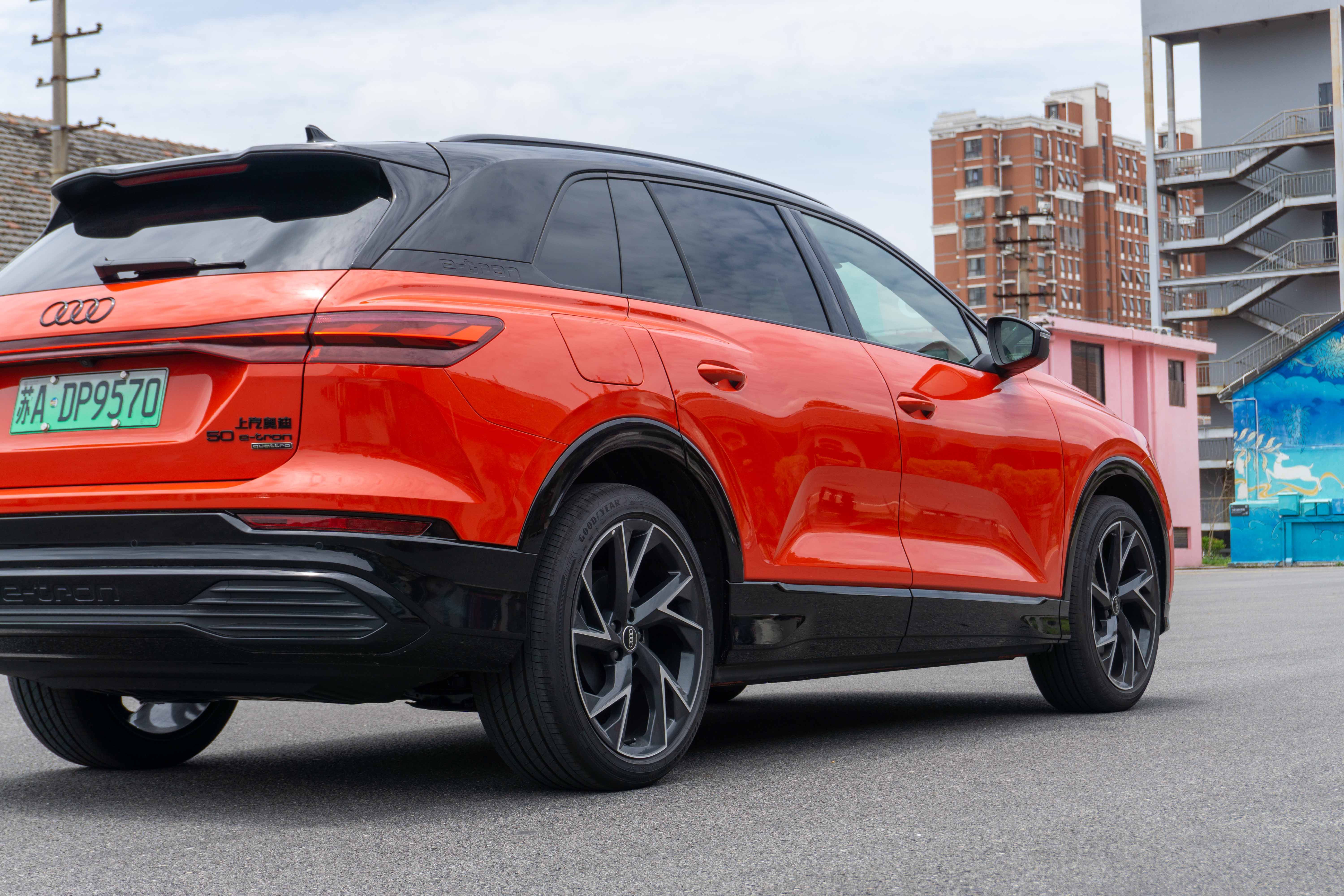
Three-row seating Audi Q5
Cabin experienceAs I got into the car, a strong “Audi scent” hit me. The interior of the Audi Q5 e-tron continues the interior style of the current new generation Audi. The overall style is very similar to the brand new Audi A3, and the air conditioning adjustment panel also shares the same interior components. Compared to Audi’s touch-controlled models, the Q5 e-tron with physical buttons has an absolute advantage in the convenience of blind operation.
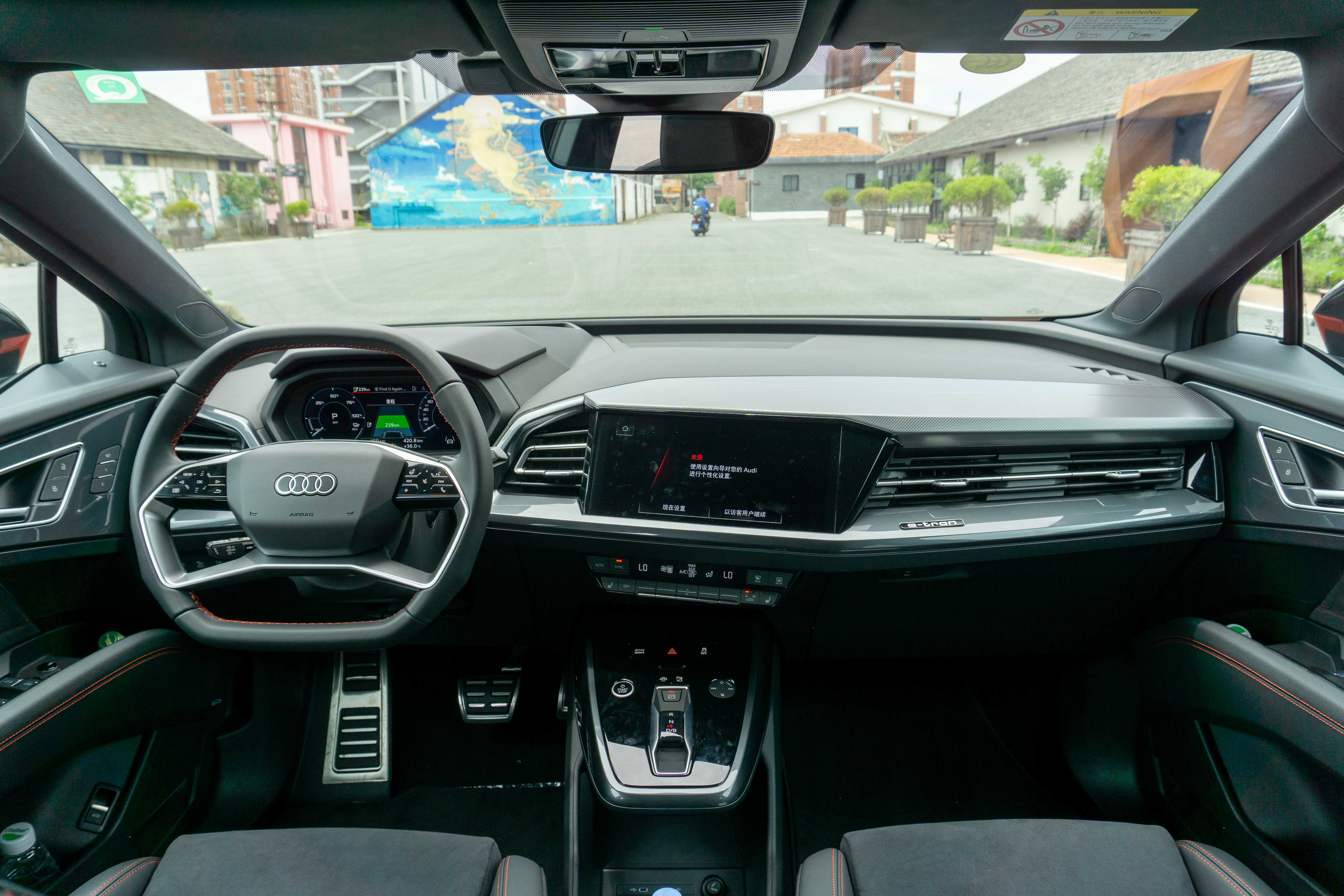
I believe that, like me, when you see this interior, besides feeling familiar at first glance, the steering wheel becomes one of the most concerned points. The steering wheel on the Q5 e-tron has been replaced with a new style four-spoke steering wheel.
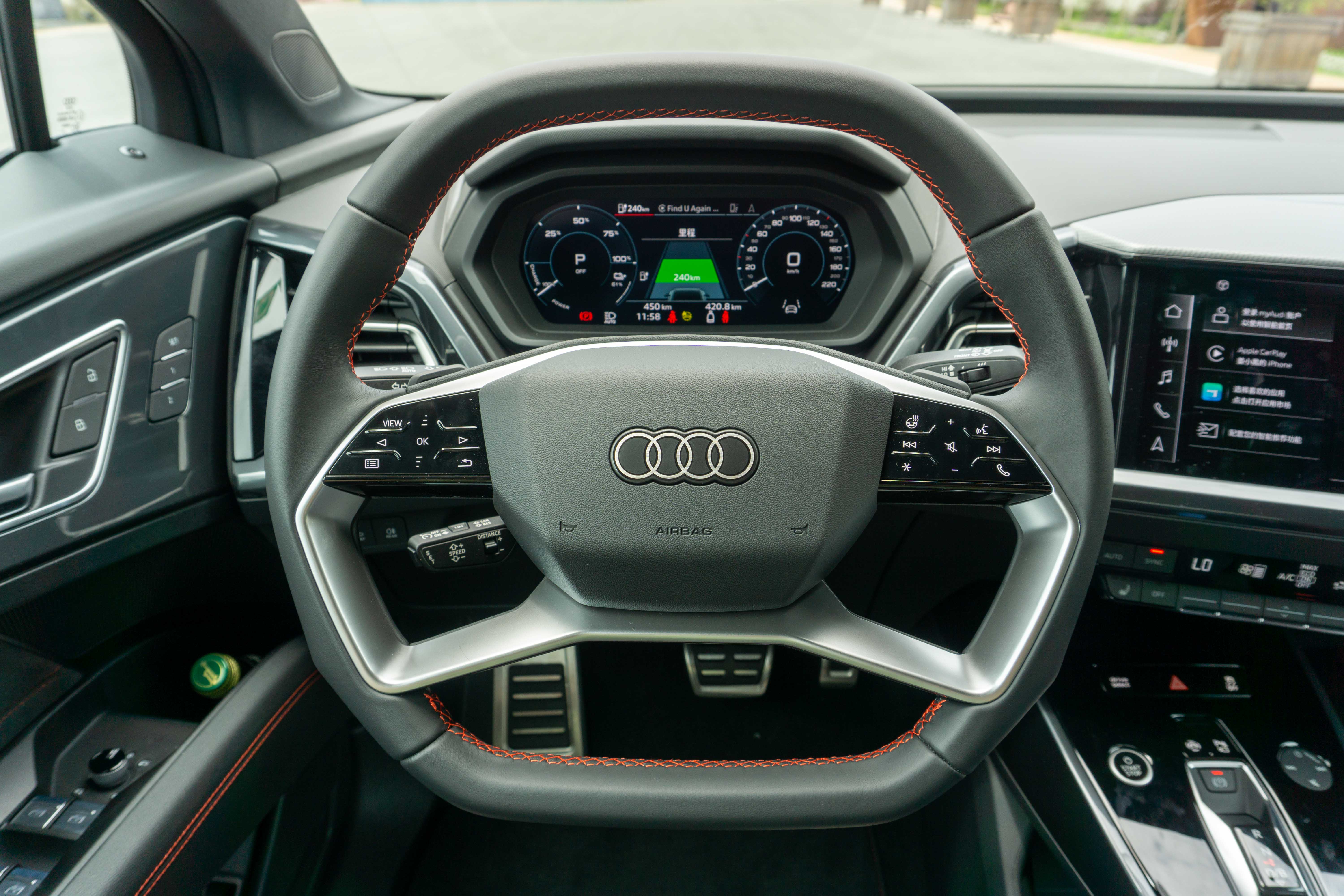
The original scroll wheel operation logic has been removed, and the operation logic of the new-style steering wheel is basically the same as that of Volkswagen. Compared with Volkswagen’s steering wheel, similar to the 3DTouch pressure feedback operation on the iPhone 6S, the feedback of the physical button is much clearer and more responsive than the analog vibration feedback, and it also has sliding operation logic. However, compared with the new players, there is a small problem that these buttons carry fixed functions, which makes these buttons’ functions more limited.
The adaptive cruise control of the Q5 e-tron is integrated into the lever below the turn signal, and the lane keeping is integrated into the top of the turn signal. This control method is almost the same as the cruise control logic on Audi models more than ten years ago. If you have ever been an old Audi owner, you almost don’t need to learn the cost. But if you are a new user experiencing it for the first time, the opening logic of the Q5 e-tron is more complicated. The first time you use it, if you operate it blindly, it is basically difficult to figure out how to use it.
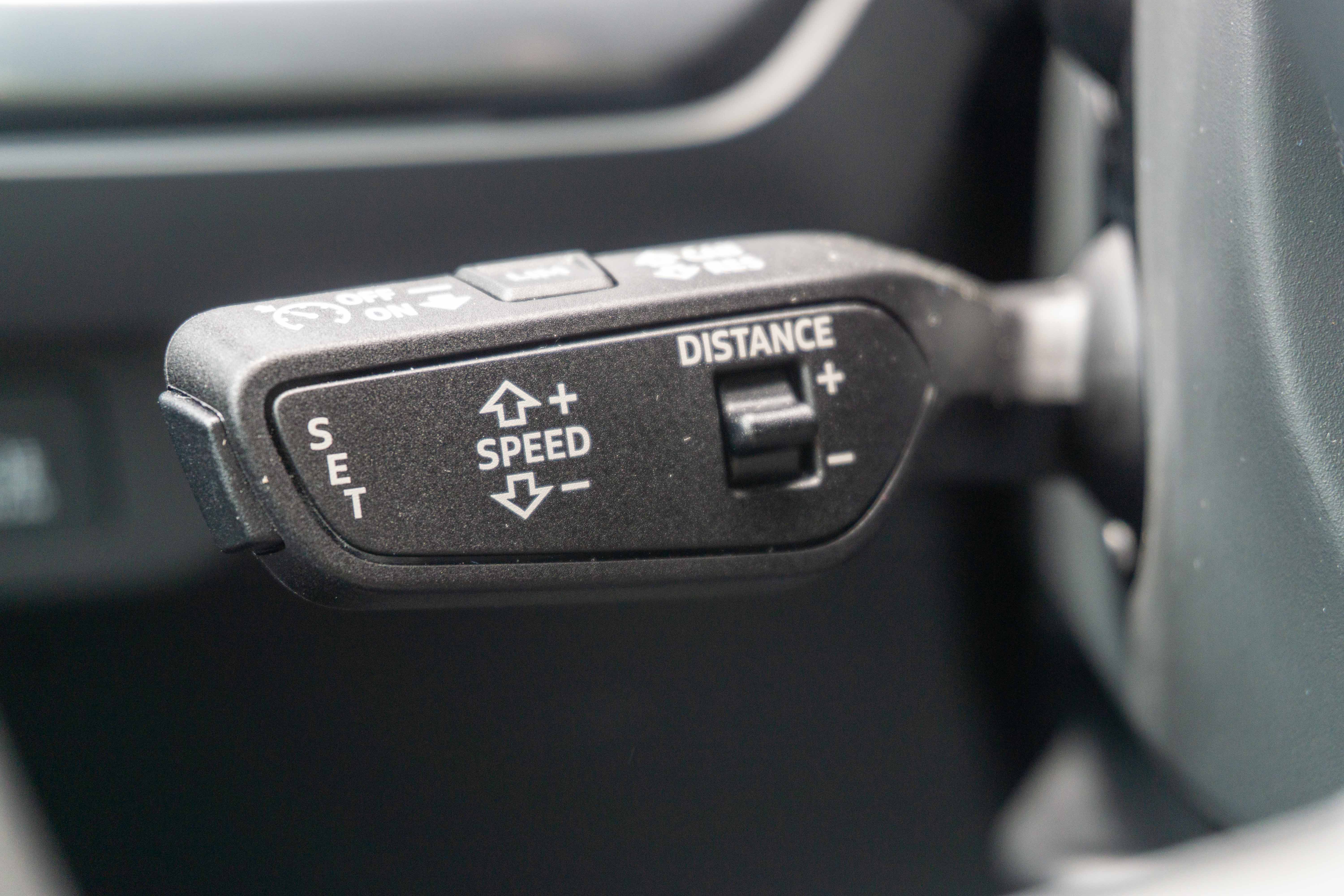
Fortunately, after the assisted driving is turned on, it will be reflected on this huge AR-HUD. Firstly, a green bar will appear to indicate the vehicle being followed. Secondly, the left and right sides of the lane will also be highlighted to remind the driver. It can be regarded as compensating for the uncertainty of the vehicle’s working status to a certain extent after the assisted driving is turned on.
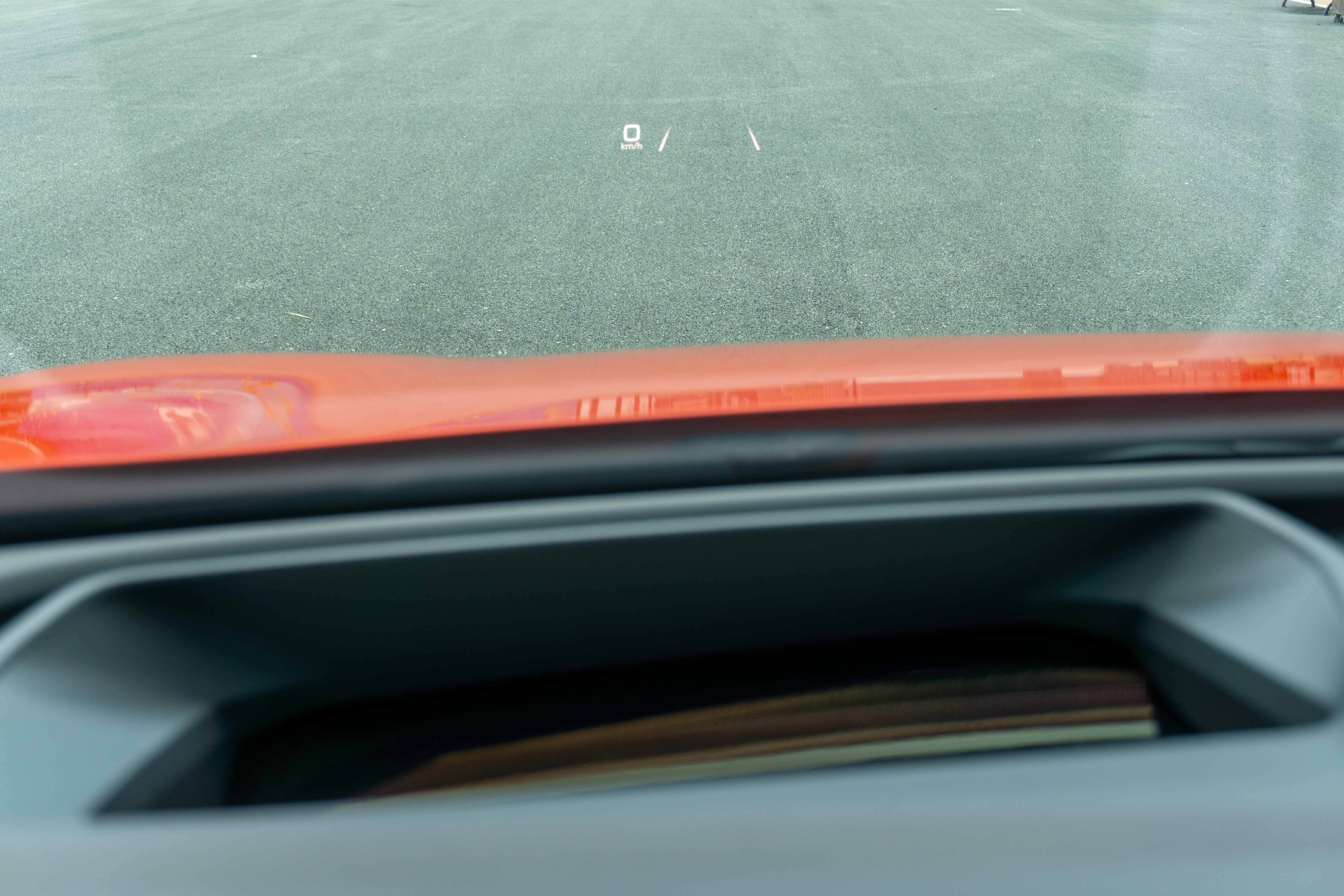 The car is equipped with Audi’s new generation MIB3 system, which has Audi’s intelligent network system. In addition to supporting 4G network, it also supports OTA and other function extensions. Judging from the user experience, the 11.6-inch display screen on the Q5 e-tron is very smooth, but there are temporarily no other third-party entertainment applications available. Fortunately, this car supports Apple CarPlay, which expands some third-party entertainment applications.
The car is equipped with Audi’s new generation MIB3 system, which has Audi’s intelligent network system. In addition to supporting 4G network, it also supports OTA and other function extensions. Judging from the user experience, the 11.6-inch display screen on the Q5 e-tron is very smooth, but there are temporarily no other third-party entertainment applications available. Fortunately, this car supports Apple CarPlay, which expands some third-party entertainment applications.
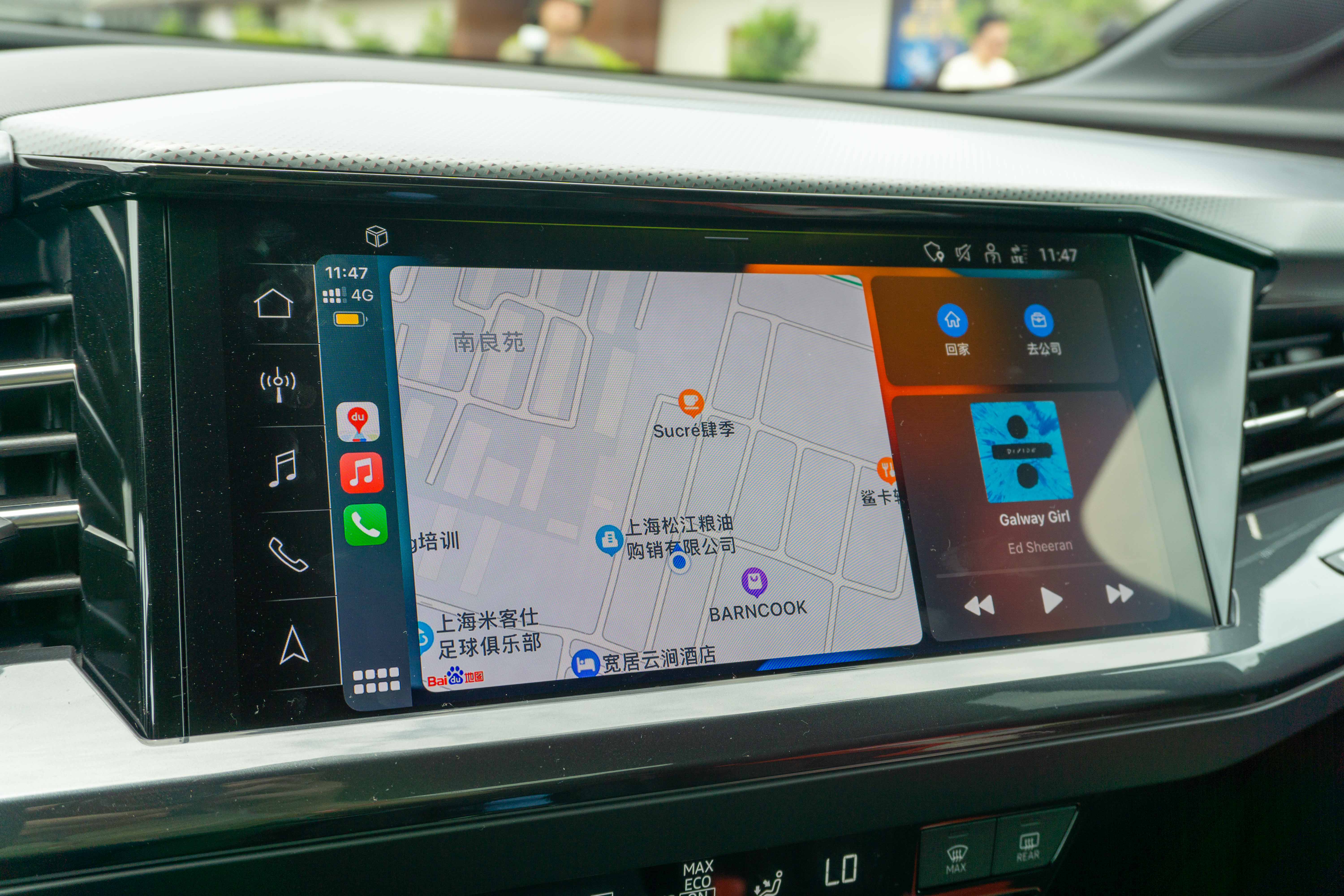
The model we tested this time comes with a 13-speaker Bang \& Olufsen sound system, in terms of the display of the audio brand, Q5 e-tron does not use elevating tweeters or have much representation on the A-pillars and armrests. Only the bottom of the door panel is pasted with the B\&O logo, which is made of metal and can be said to be very low-key.
In terms of actual auditory experience, the sound system on the Q5 e-tron reaches the level of this type of car model, and can create a decent auditory experience when connected to CarPlay.
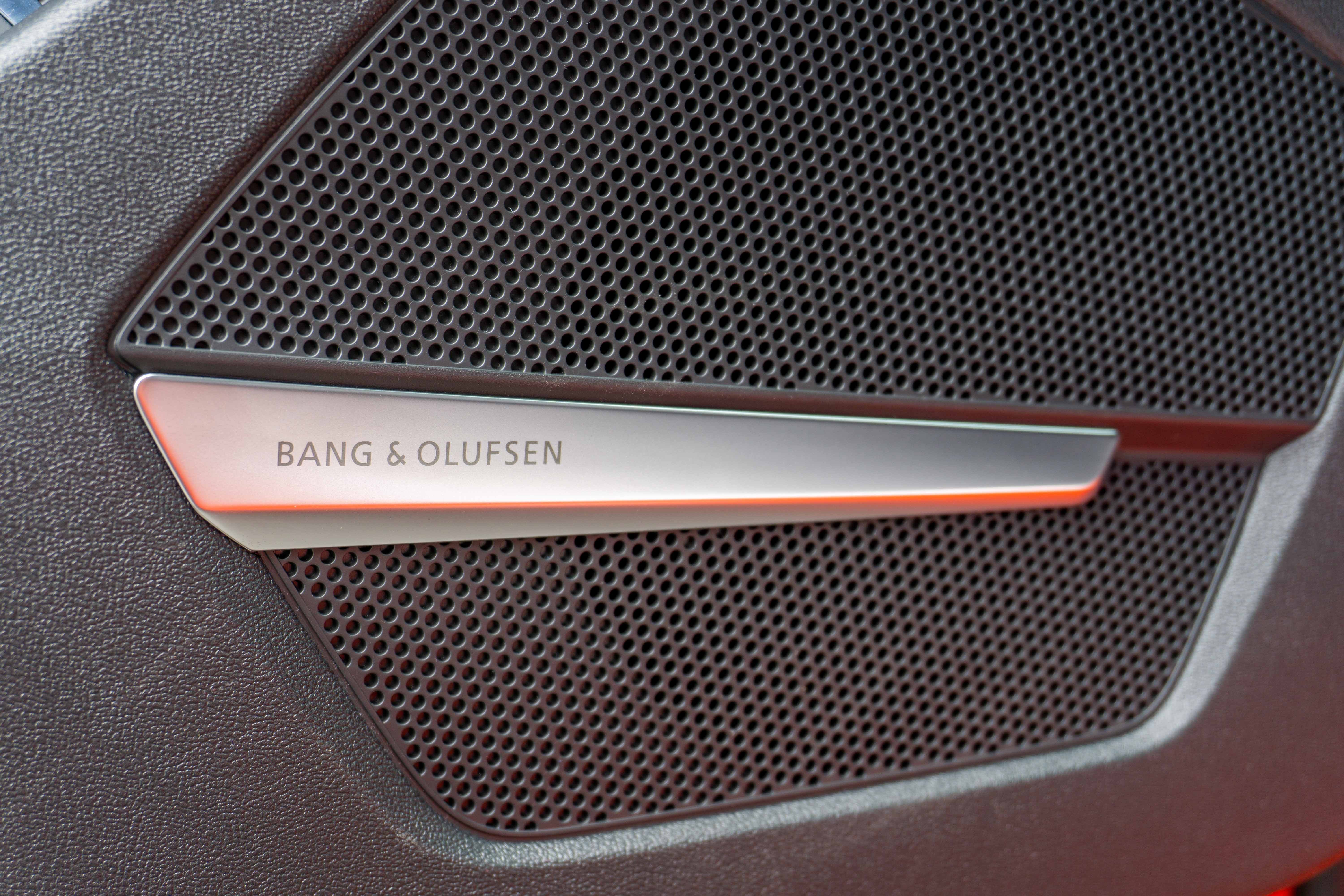
Experience of Three Rows
Compared with the fuel version Q5L, the Q5 e-tron is the biggest difference in that it is a pure electric SUV with three rows of seats that can provide 6/7 seats. The version we tested was an edition one, which is a 6-seater model with a layout of 2+2+2. The seating experience of the front and second rows is a bit hard, which is the same style as other Audi models I’ve tested, which all pursue filling materials to provide excellent support.
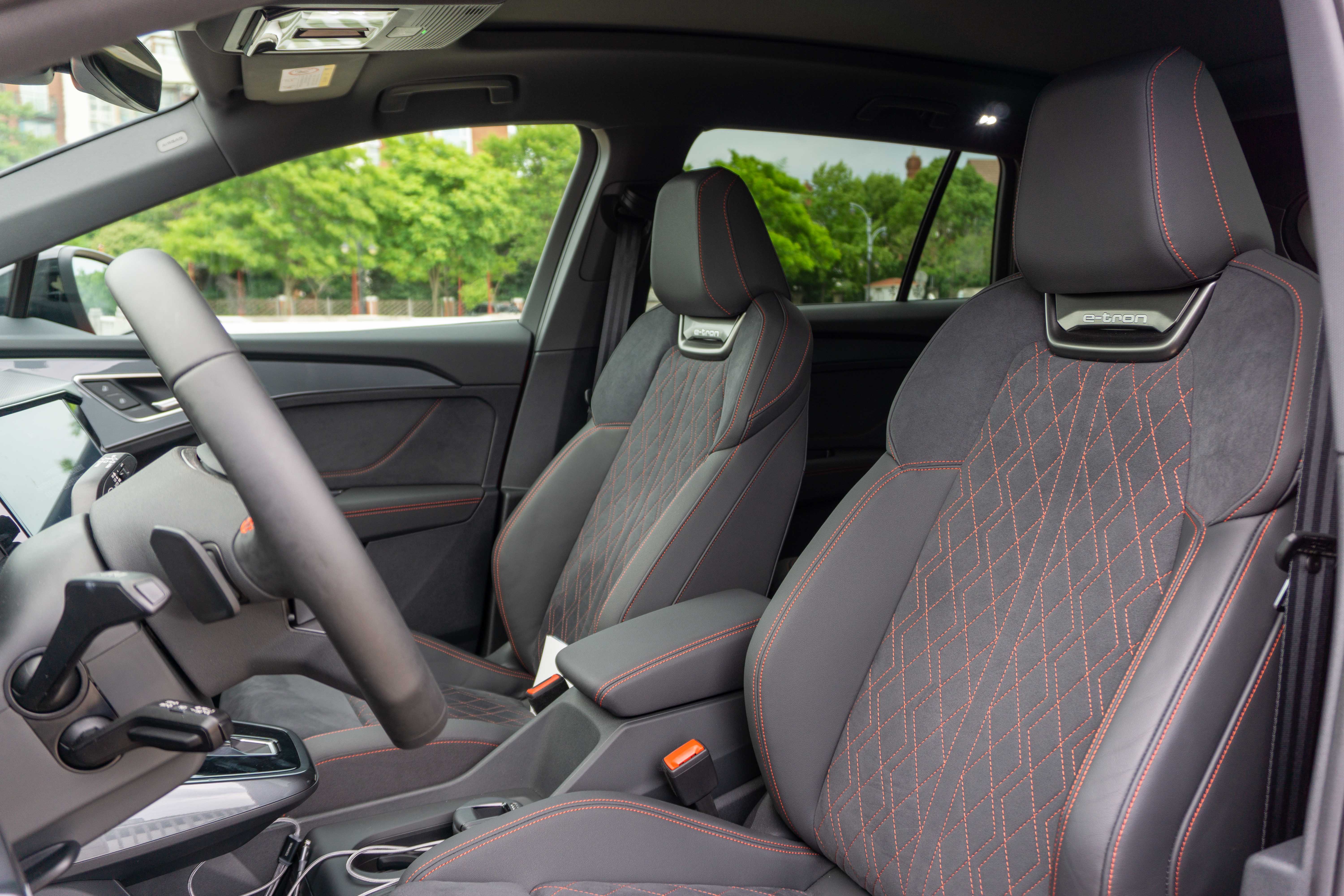
The performance of the seat cushion length and width is good. Under intense driving, the seat can provide excellent wrapping, and the large area of suede material can further fix your body in the middle of the seat.
It is worth mentioning that while everyone is equipped with non-openable panoramic sunroofs, the Q5 e-tron still has an openable panoramic sunroof. This is very convenient for users who need ventilation during spring and autumn or have a smoking habit.
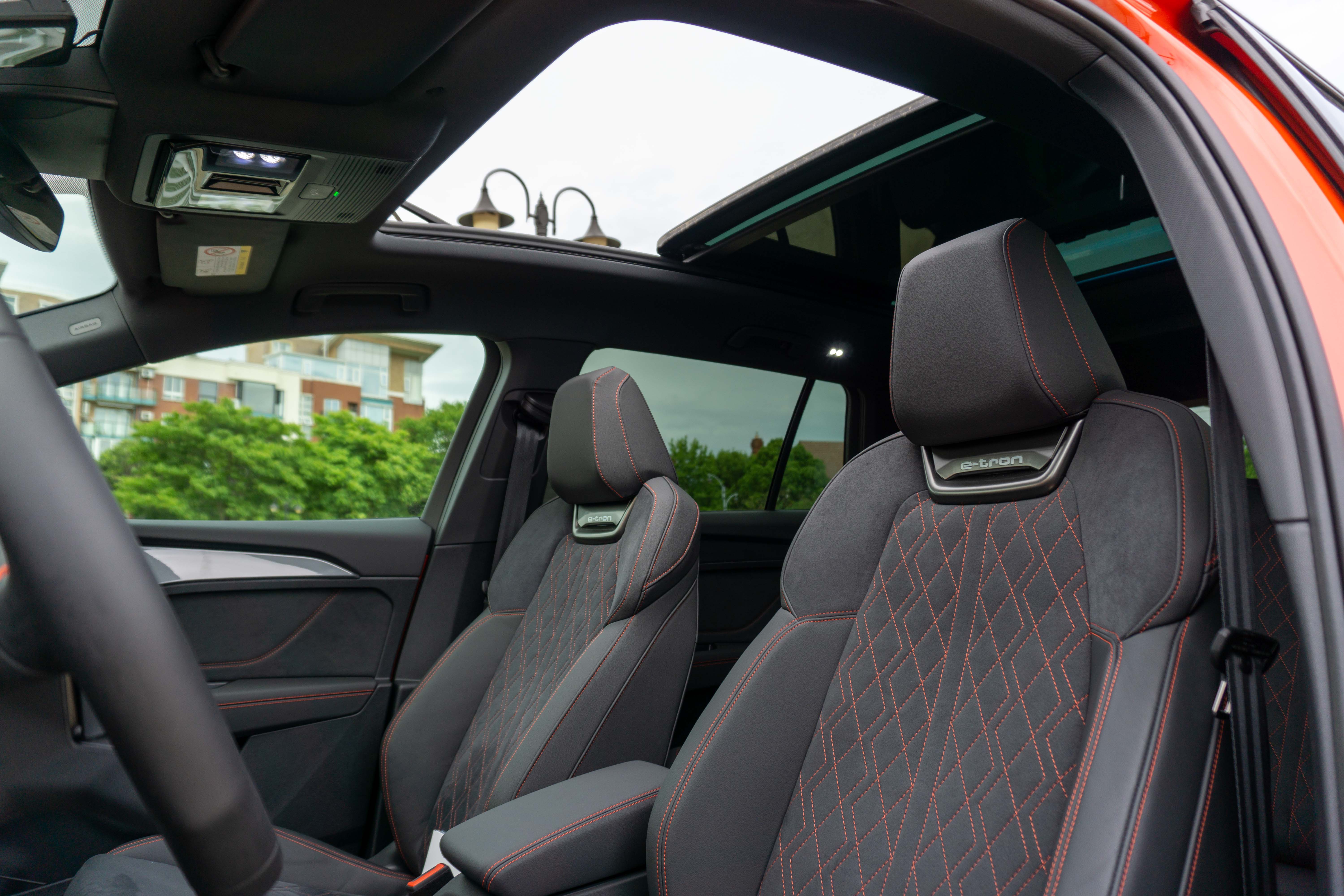 The focus of the Q5 e-tron lies in its three rows of seats. However, in terms of passenger space, the actual experience is quite tight if the Q5 e-tron is fully loaded.
The focus of the Q5 e-tron lies in its three rows of seats. However, in terms of passenger space, the actual experience is quite tight if the Q5 e-tron is fully loaded.
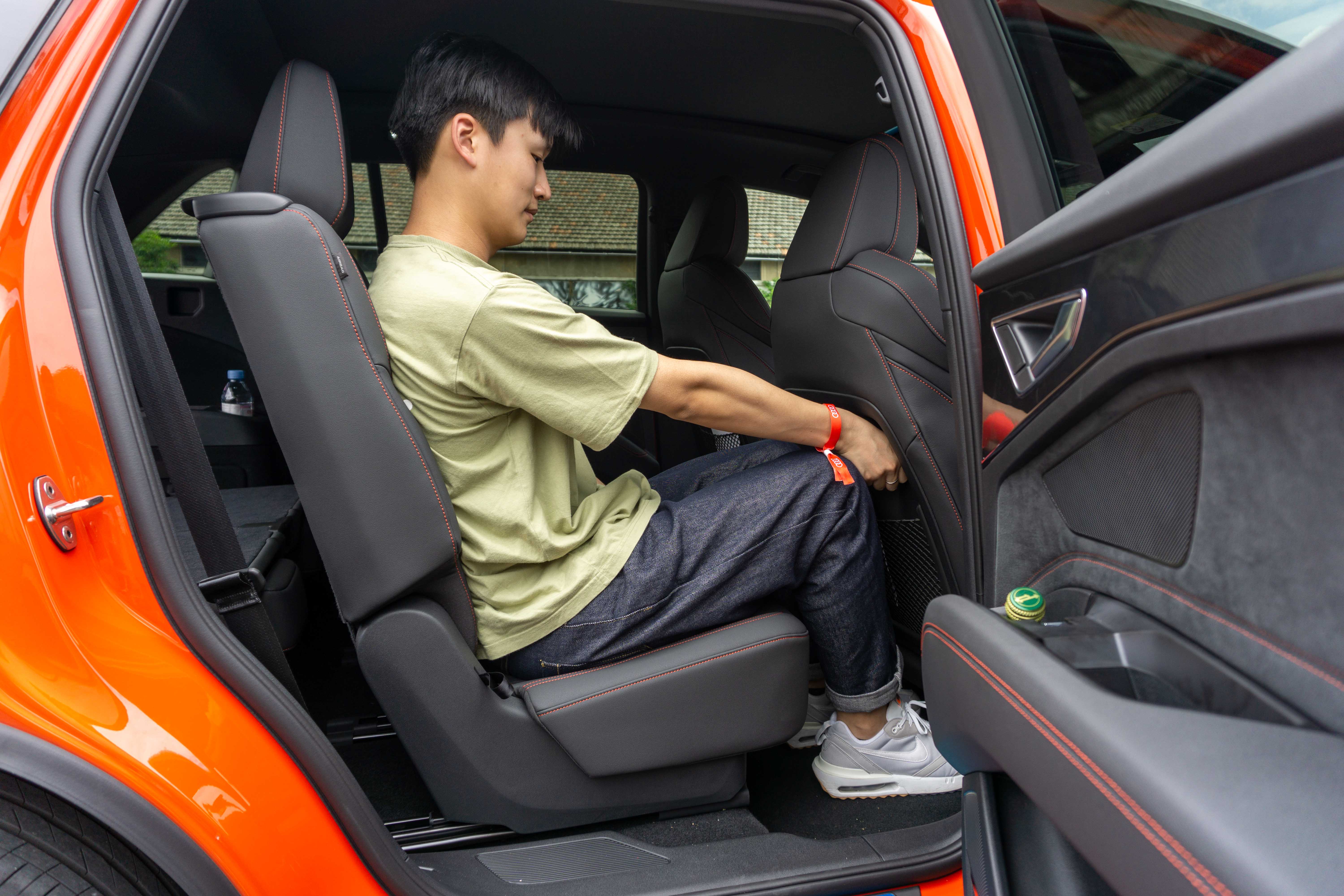
With a height of 1.75 meters, I only have a fist’s distance between my knees and the seat groove in the second row legroom. The legroom of the third row is only two fingers, and the headroom is only one finger. Moreover, the seat cushion and backrest are relatively thin, and the overall comfort is average. Small-bodied friends and children are more suitable for riding, and it is not recommended for larger friends to sit for a long time.
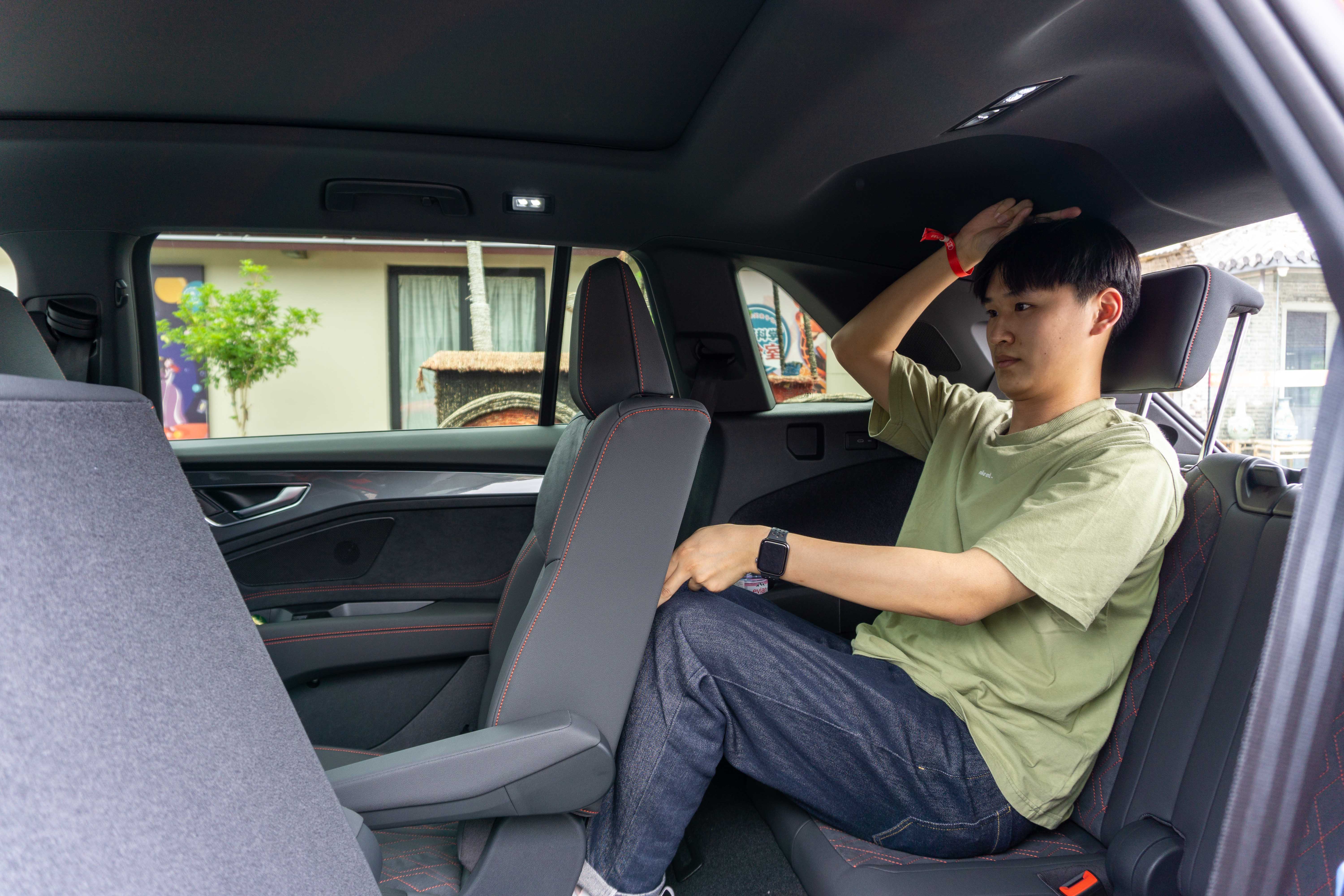
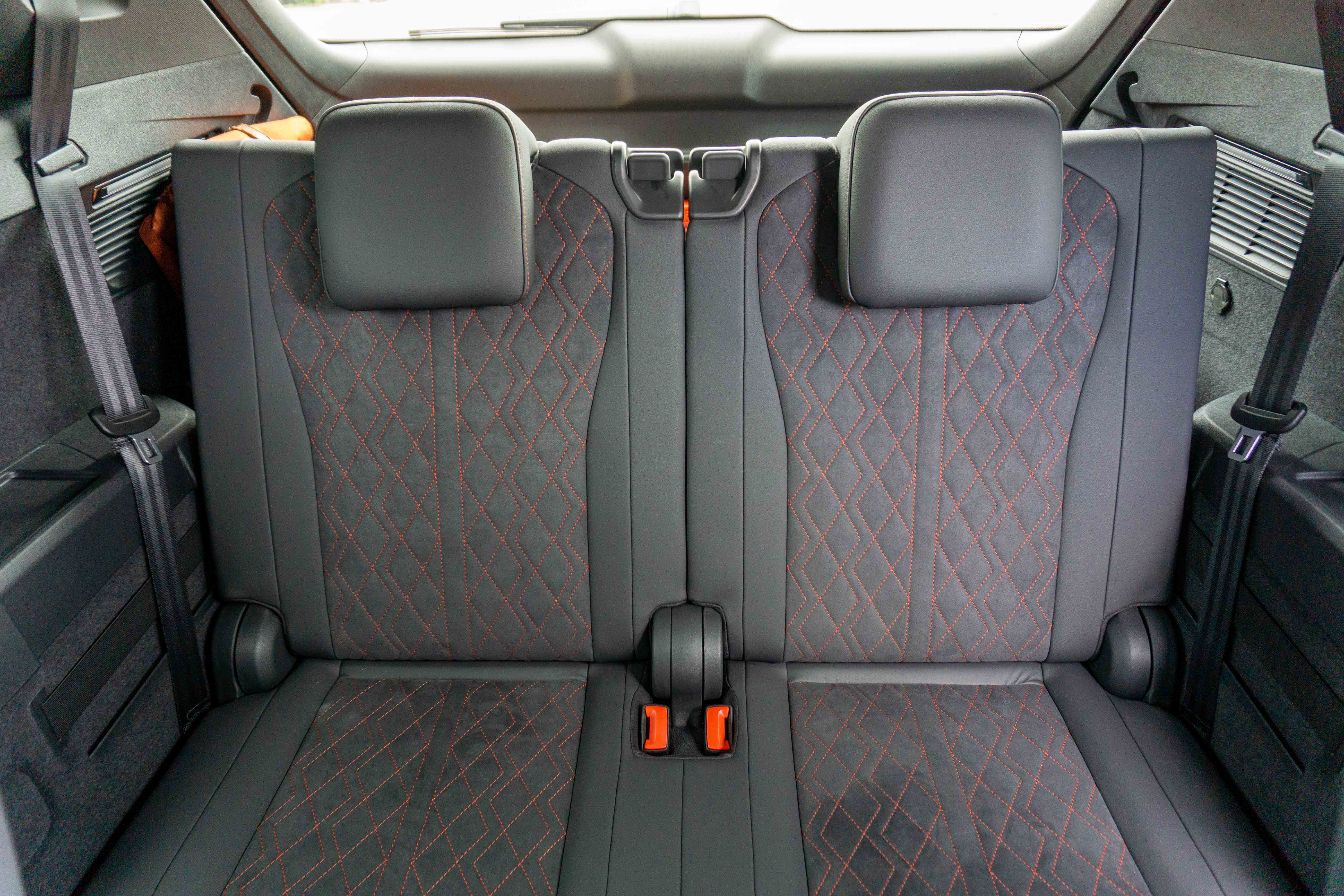
Although the Q5 e-tron’s performance in space is not outstanding, Audi still equipped some configurations for the third-row passengers. Two grooves are provided on the armrest, one for placing a mobile phone and the other for placing small items. There is also a cup holder in front of that. At the same time, there is a Type-C charging port above, which can provide power to items in the trunk as well as passengers in the rear row.
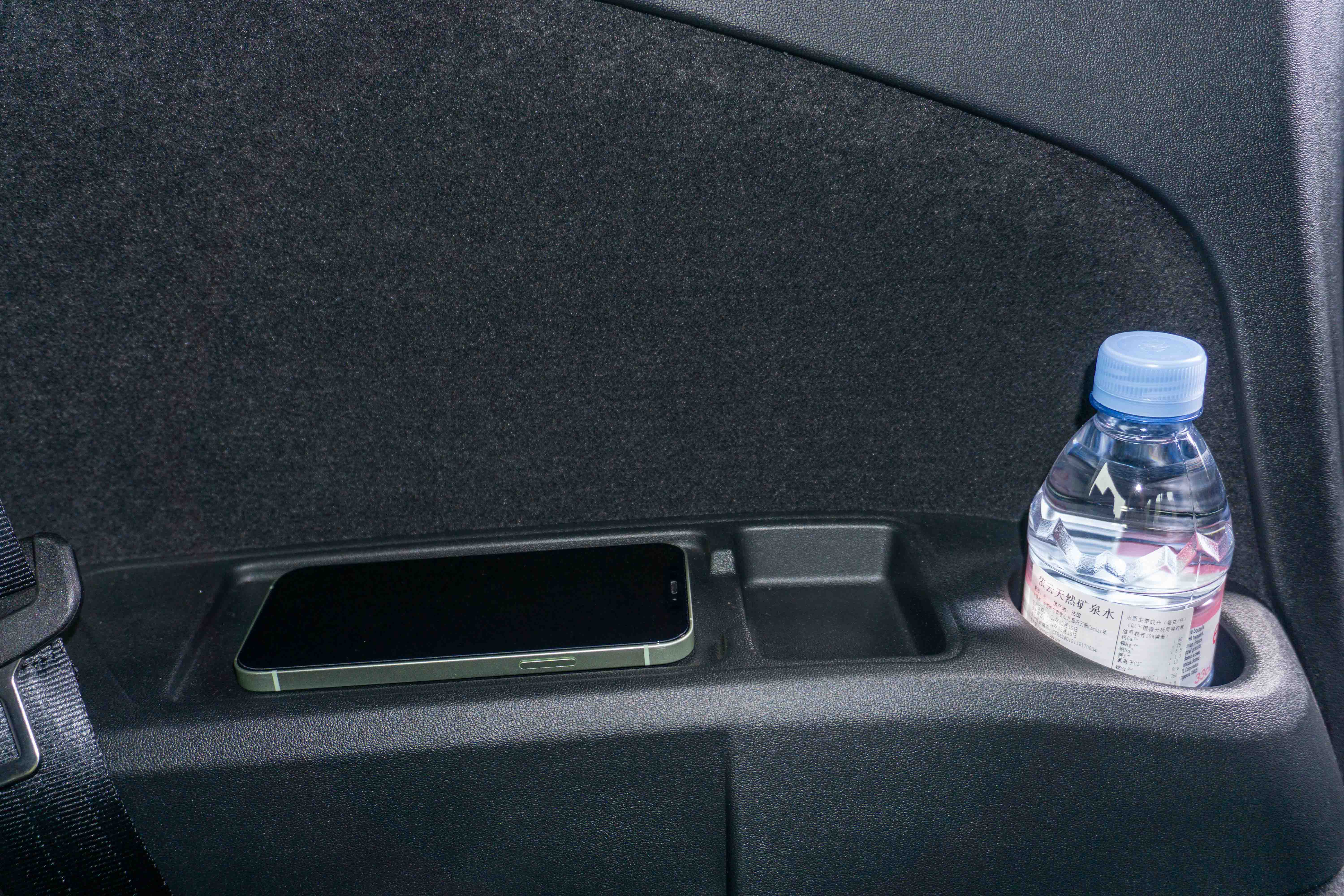
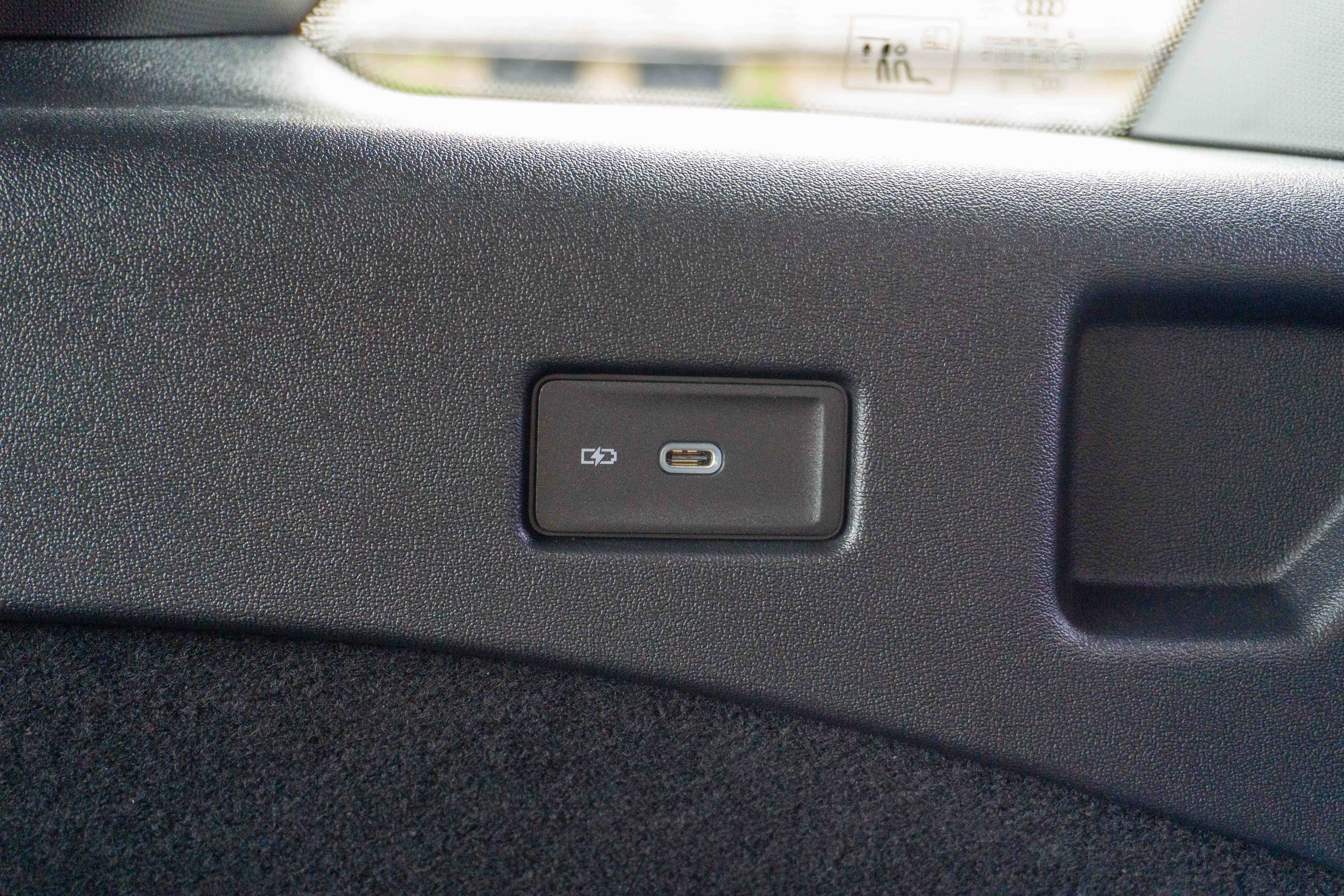
In the Q5 e-tron, there are two ways to access the third row. One is the conventional way, just like most MPVs, by entering directly from the middle aisle. The width of the Q5 e-tron’s middle aisle is just the length of an iPhone 12 (14.67 cm), plus the protrusion of the roof storage skylight curtain. For me, it is quite difficult to pass through the middle and enter the third row.
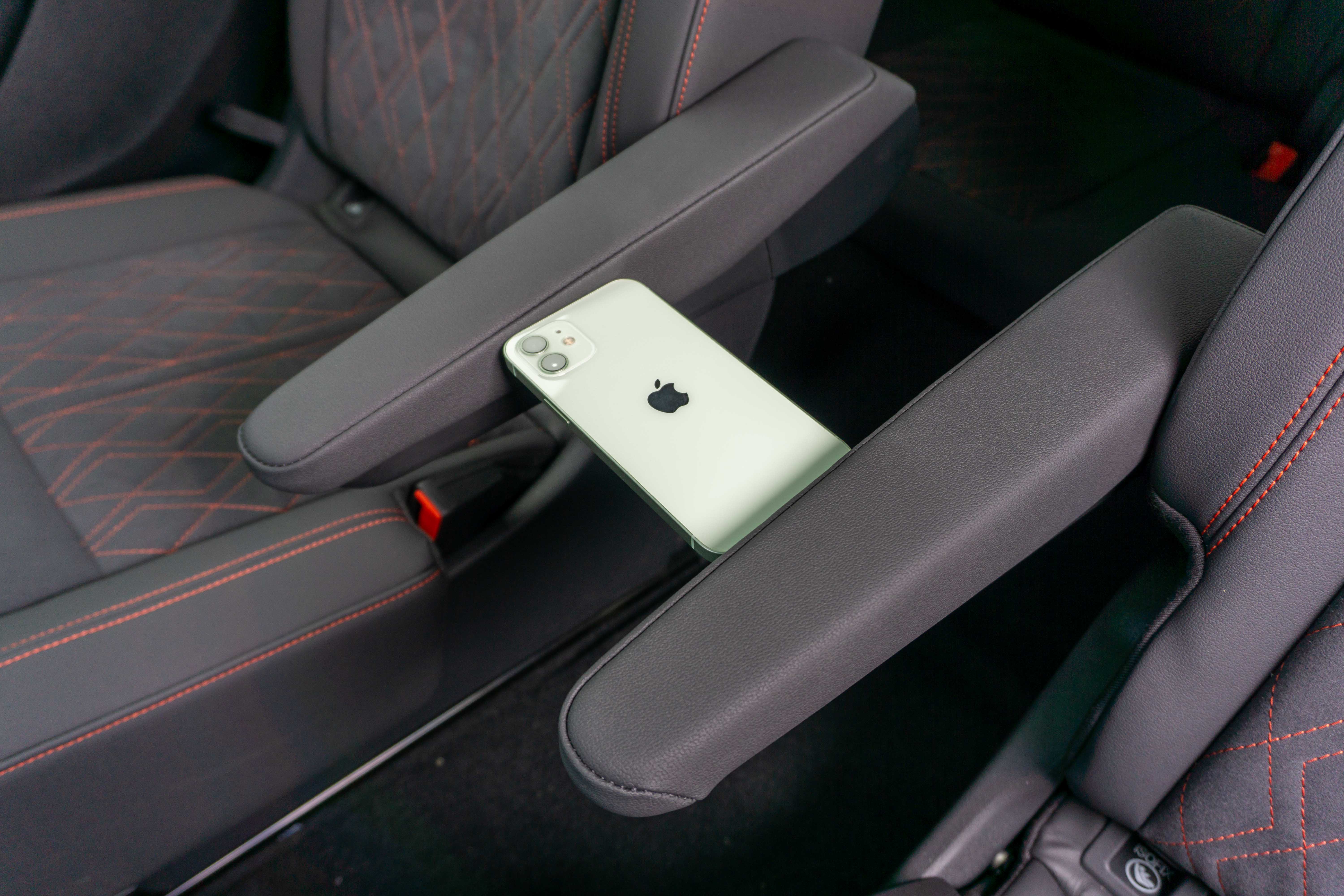 Therefore, Audi has provided a traditional 7-seat SUV third-row entry method for the Q5 e-tron. In the case that no one sits in the second row, I personally think that this method of getting on and off is more appropriate. Therefore, the passage in the middle aisle mainly provides the need for passengers to change seats while the vehicle is in motion.
Therefore, Audi has provided a traditional 7-seat SUV third-row entry method for the Q5 e-tron. In the case that no one sits in the second row, I personally think that this method of getting on and off is more appropriate. Therefore, the passage in the middle aisle mainly provides the need for passengers to change seats while the vehicle is in motion.
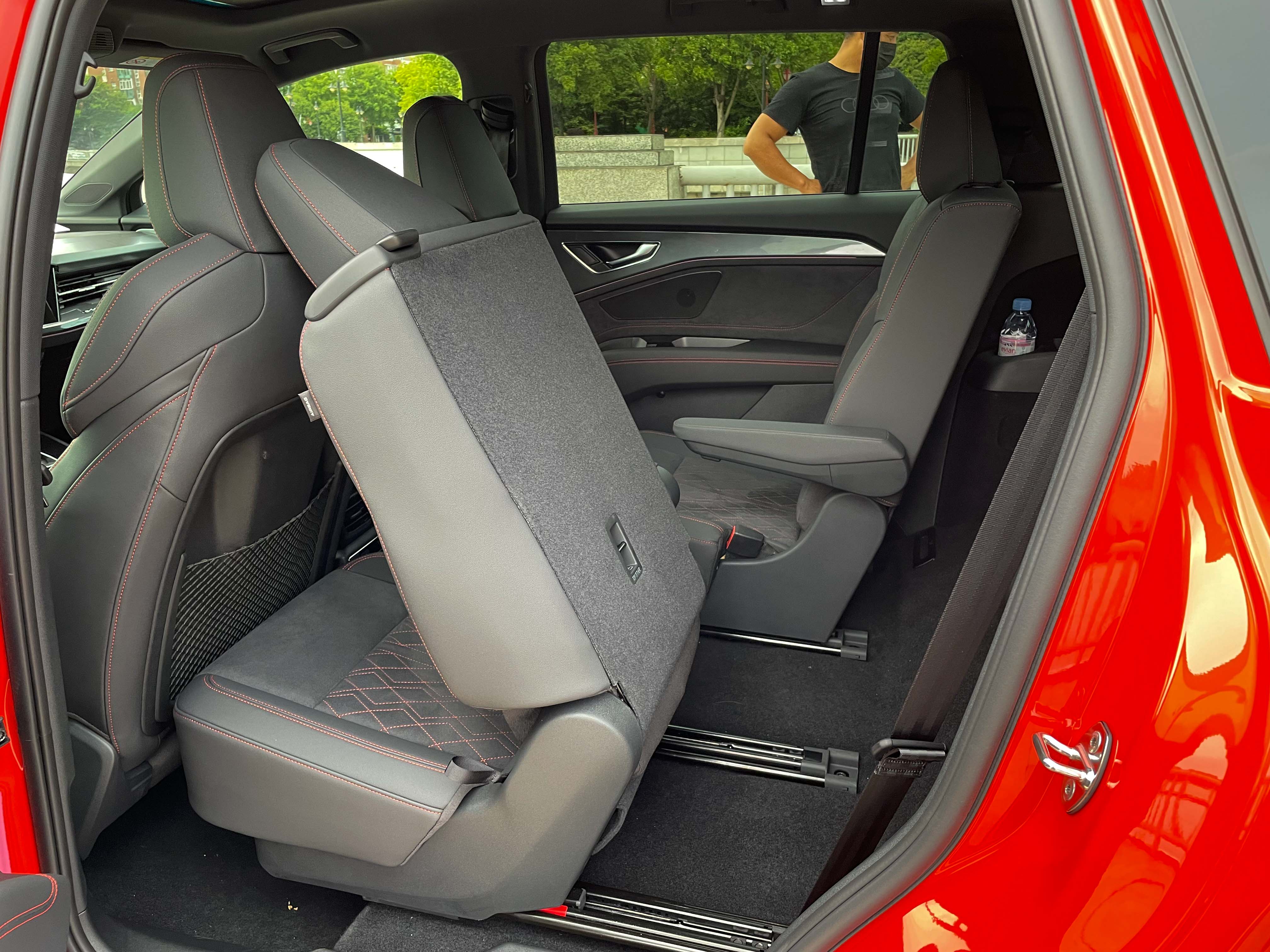
The sacrifice of the third-row space has freed up some space for the trunk. Even when the third-row seats are upright, there is still a usable trunk space. It will not happen that when someone is sitting in the third row and the trunk is opened, their head is outside the car.
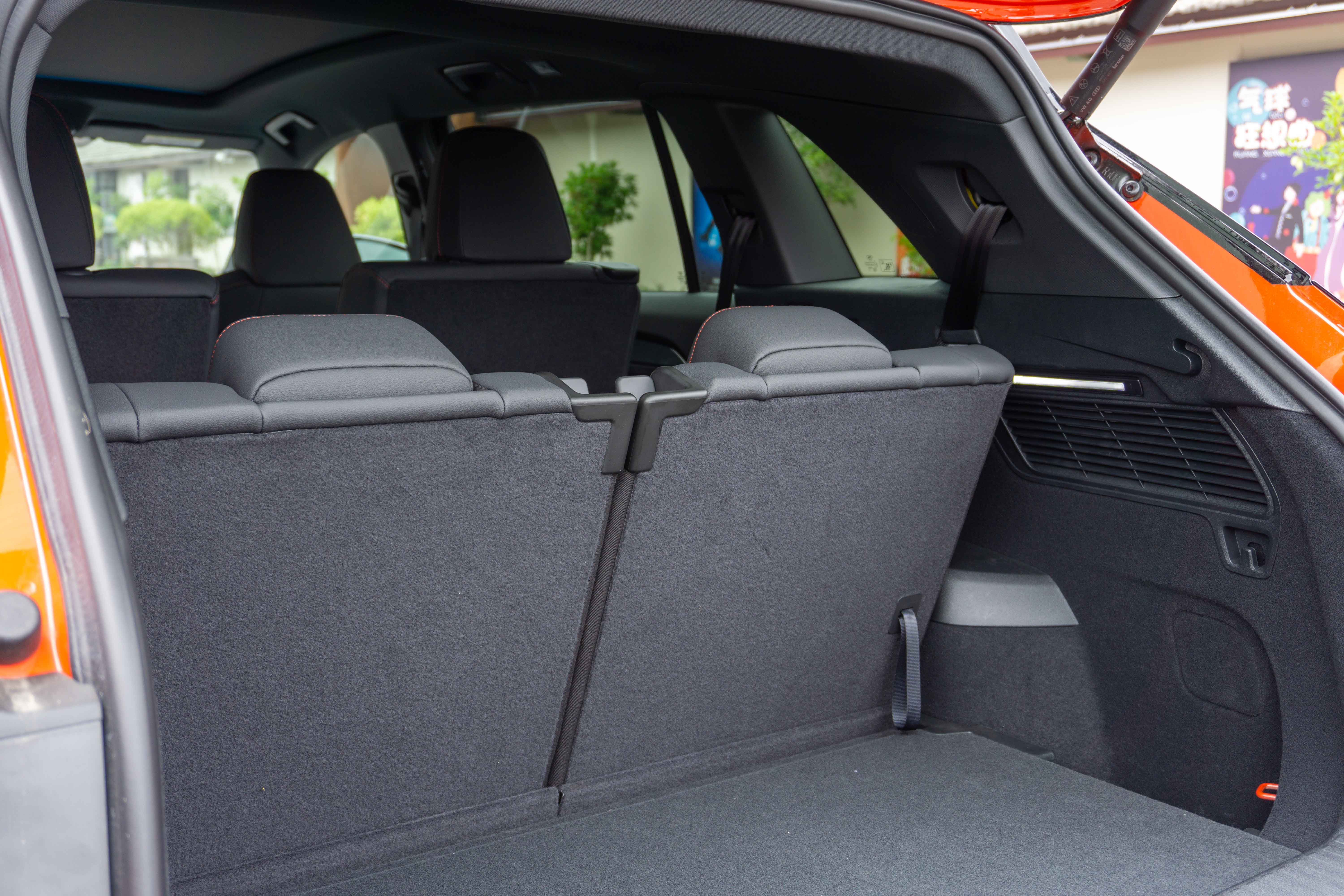
Moreover, there is a partition below the trunk, where a cargo cover and some common sundries can be placed, which helps keep the trunk space tidy.
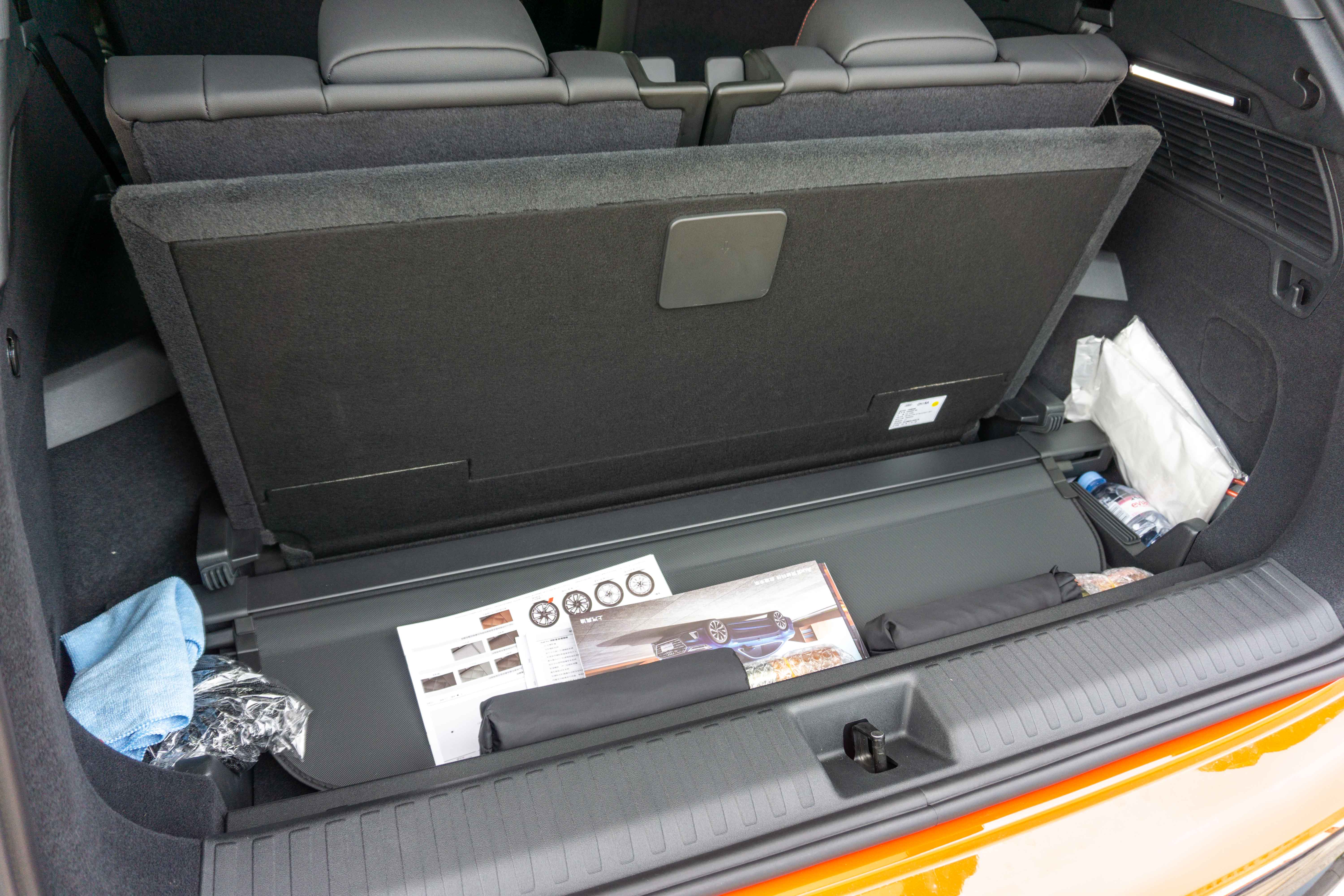
However, when you need a normal trunk space, it is recommended to simply fold down the third-row seats. After folding down, you will get a completely flat space with a very considerable depth.
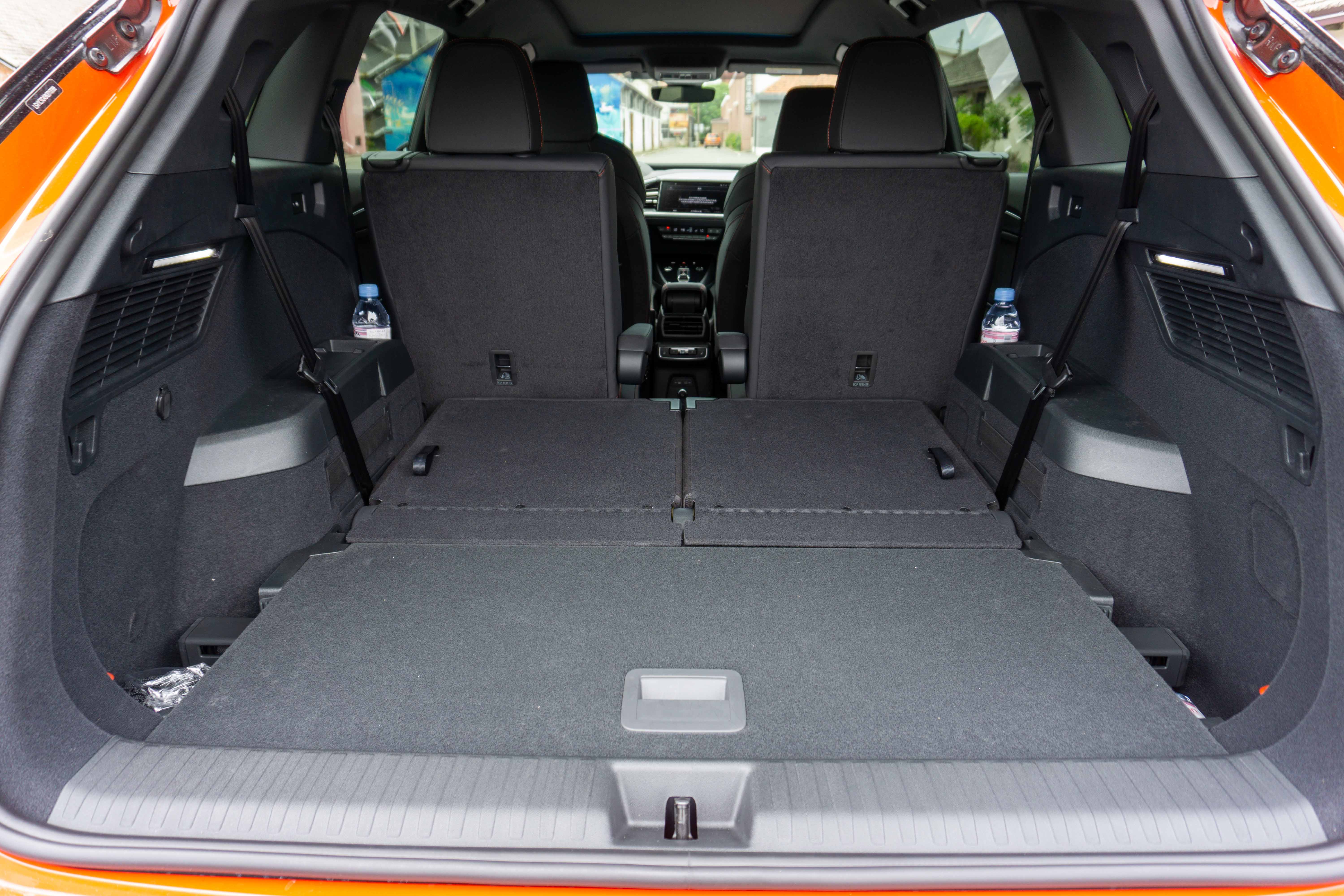
For 6/7 seat SUVs, the reason why most people choose 6 seats is that the second row has two independent seats. If most of the time there are 4 passengers or fewer, the comfort of riding will be better than that of a 7-seat model, and compared with the 7-seat model, one less middle seat means that getting in and out is easier, but sacrificing the trunk space under the 5-person seating state and the right to fold down the second row.
Therefore, based on these pros and cons, I think that the 2+3+2 7-seat version of the Q5 e-tron will be a more practical version, because the second row of the 6-seat version is not more comfortable than that of the 7-seat version, and the convenience of getting in and out has not increased much. The third row is a more emergency state.
This is a fuel-oriented pure electric vehicle.The Audi Q5 e-tron is built on Volkswagen’s MEB platform and is also the first pure electric vehicle from SAIC Audi. In terms of power, the Q5 e-tron has two power versions, a single motor rear-wheel drive 40 and a dual motor all-wheel drive 50. The test drive car we had was the 50 version, with a maximum power of 225 kW, a maximum torque of 460 N·m, and a 0-100 km/h acceleration time of 6.7 seconds. This acceleration performance is not outstanding among various electric vehicles, but the highlight of the Q5 e-tron lies in the driving experience.
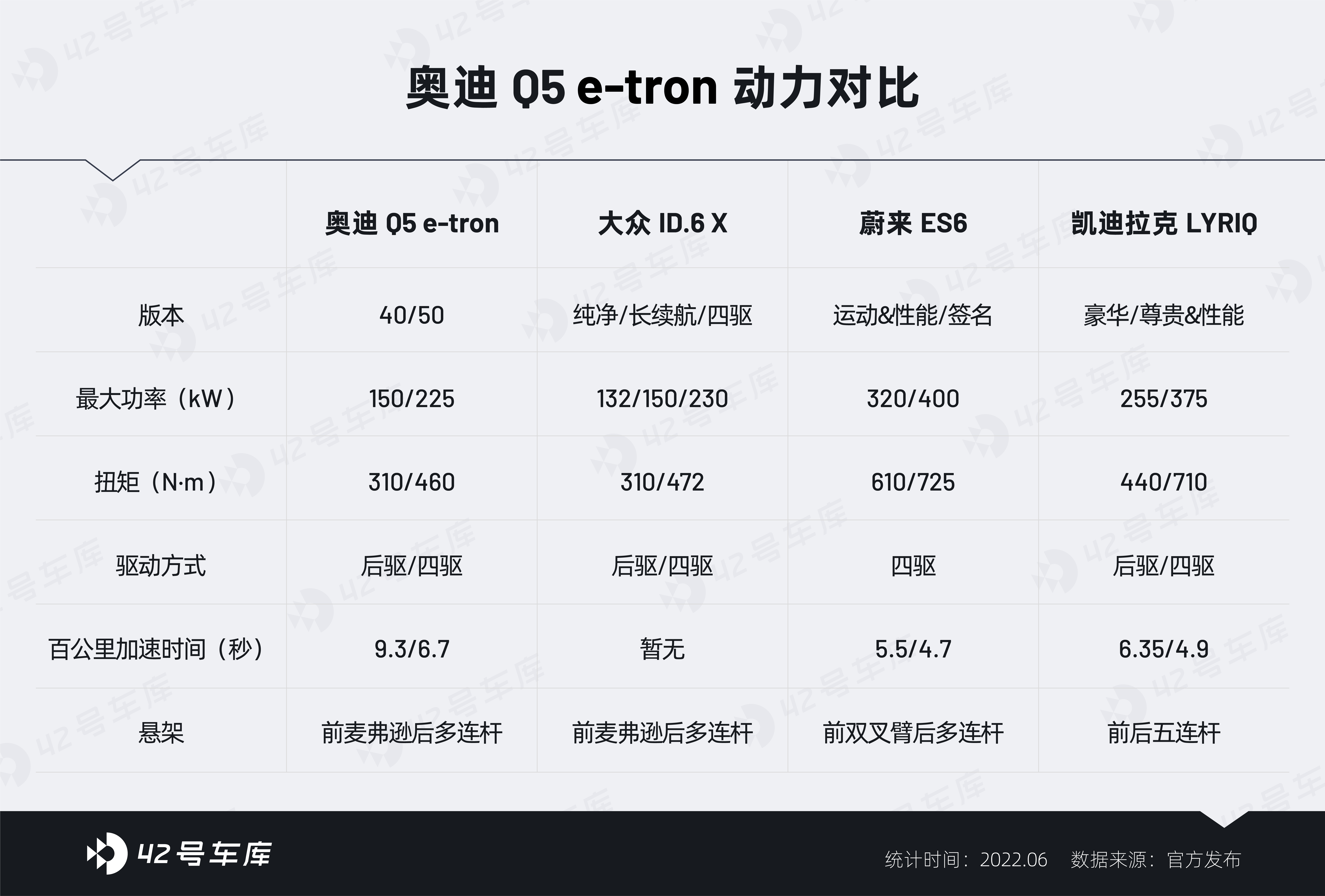
Like Volkswagen’s ID. series, the Q5 e-tron does not need to be awakened by a start button when getting on the car, just step on the brake and shift to drive. The whole driving process is very simple, and the start button on the center console is designed to restore power to the vehicle after it is shut down.
In fact, car manufacturers have begun to gradually downplay the starting button of the vehicle, and Volkswagen Group is also downplaying the process of starting the vehicle in practical experience. The reason why a start button is still placed on the center console, a valuable space, is because the logic of turning on and off the Q5 e-tron is consistent with other MEB models. When the driver shifts to the P gear and leaves the car, the vehicle will automatically shut down. If there are still passengers in the car at this time, the start button is needed to restore power.
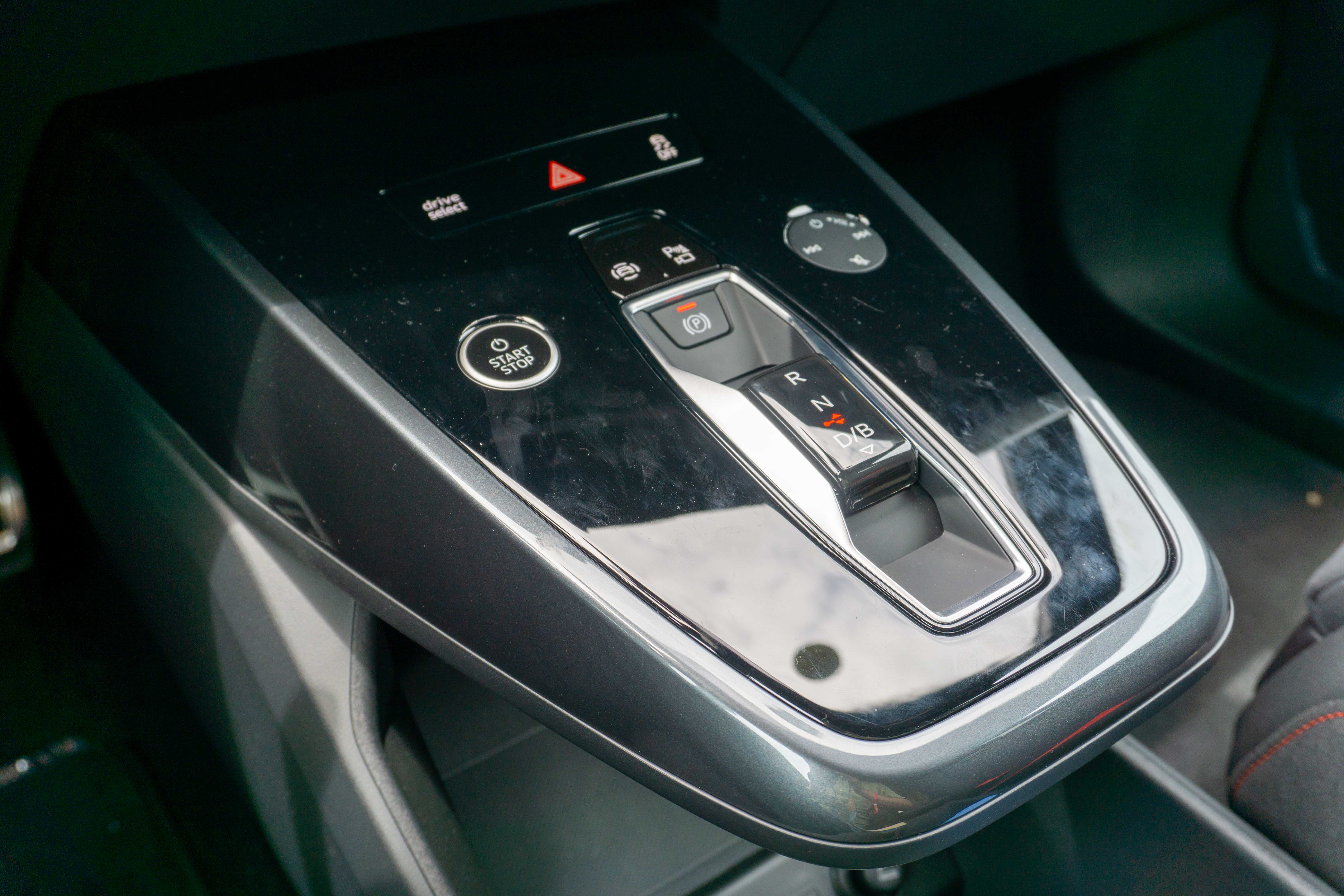
After so much talk, let’s get back to the actual driving experience of the Q5 e-tron. The biggest feeling I got from the Q5 e-tron is that it feels like a gasoline car.
The initial feedback of the Q5 e-tron’s accelerator pedal is not very sensitive, and it does not have a distinct acceleration characteristic like many electric cars, releasing a very strong torque at the initial stage of the accelerator pedal. In this regard, the experience of the Q5 e-tron is actually very similar to that of its conventional gasoline cars. Pressing more or less will not cause the vehicle’s dynamics to bounce around. Instead, the accelerator pedal has a long stroke and a feeling that the more you press it, the more power it produces.
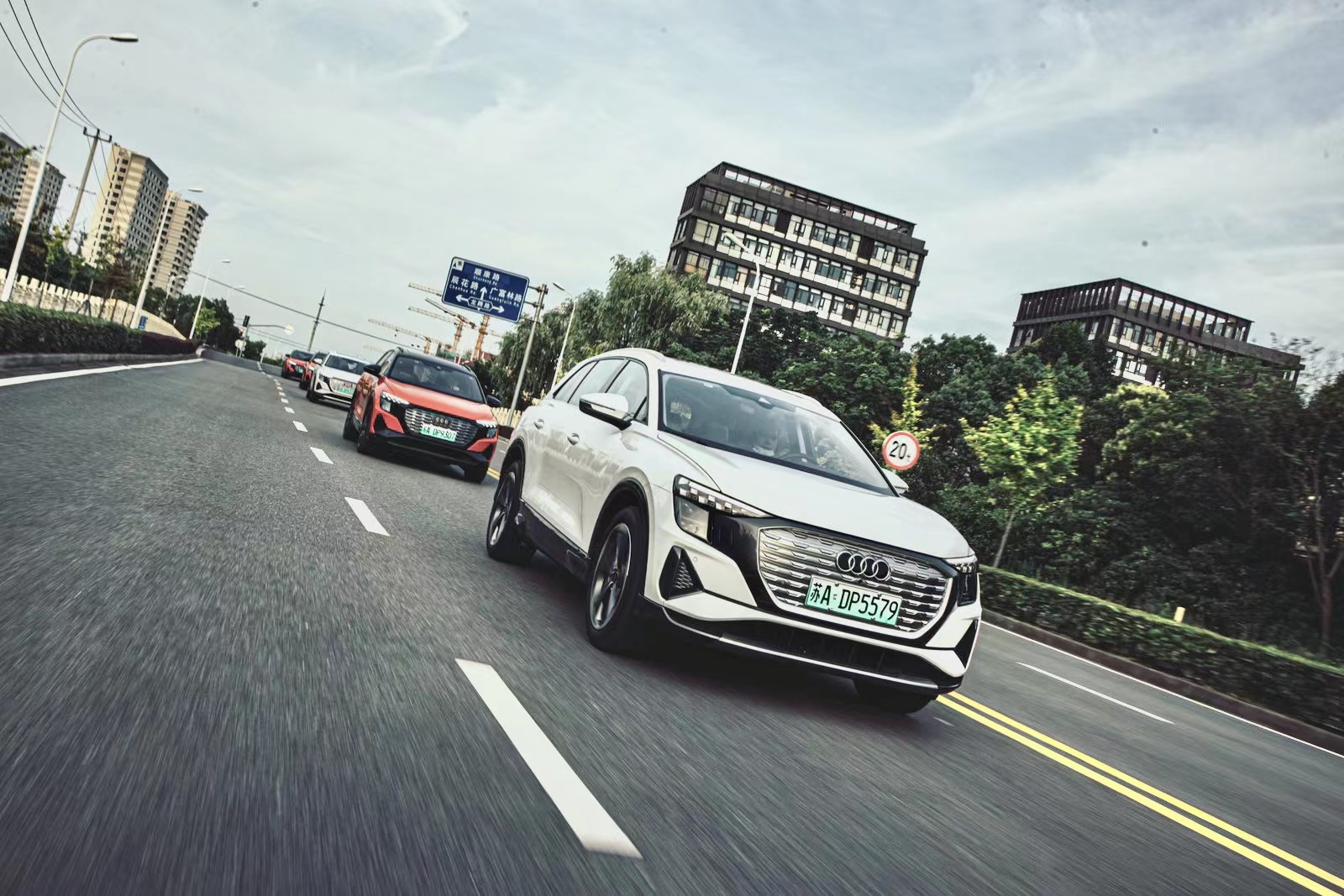
At the same time, the chassis performance is very robust and has a strong German style resilience. Compared with the comfort-oriented Volkswagen ID.6, the Q5 e-tron can provide good support, filters out minor bumps, but you can still feel the feedback from the road surface.When running over manhole covers or large potholes, the feedback from the vehicle is not directly transmitted to your buttocks, and it can effectively absorb large-scale bumps. After the suspension system handles it, there are no small lateral vibrations. The factors behind it include the weight of 2.4 tons and DCD electromagnetic suspension that can adjust the road hardness.
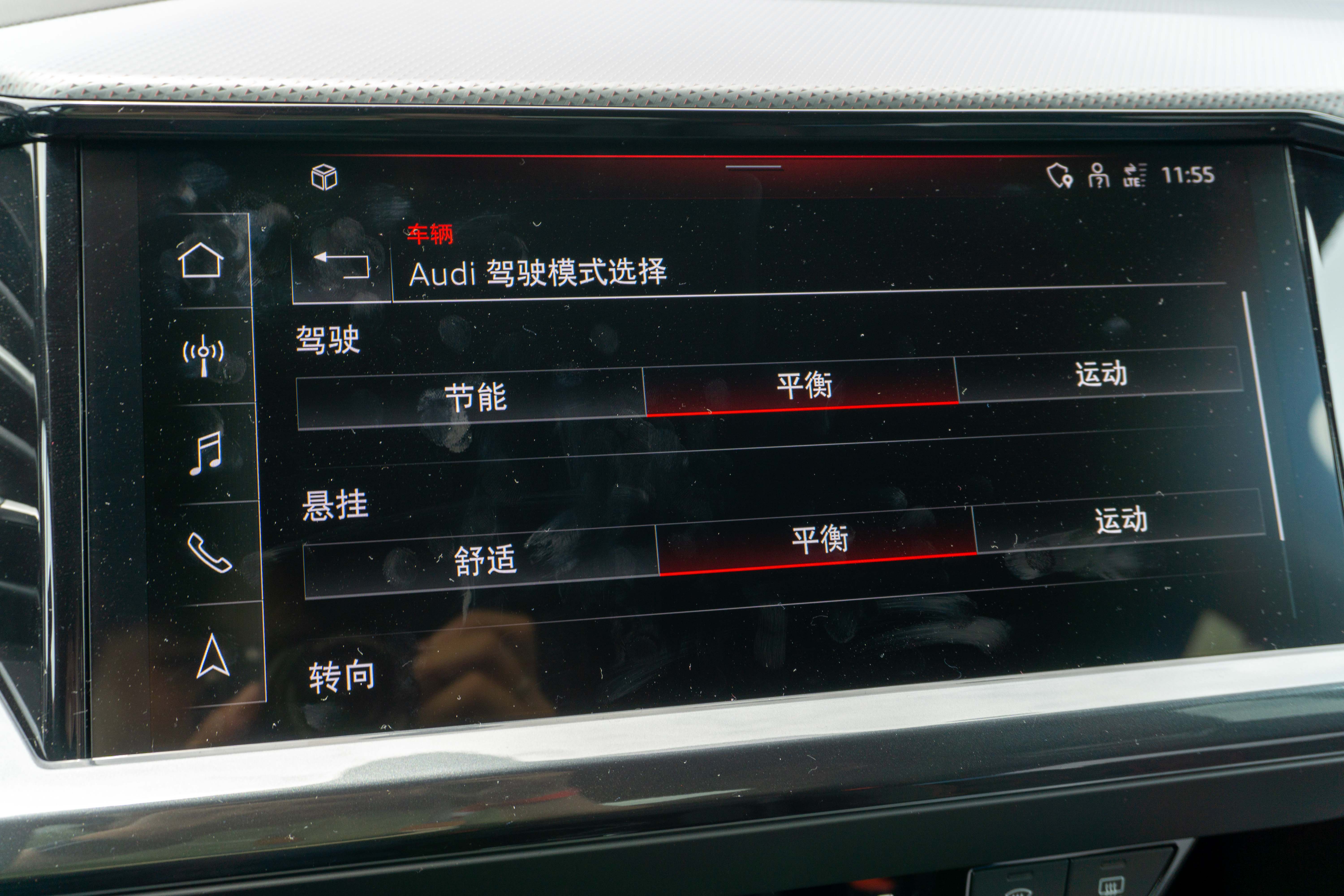
At the same time, the steering damping of the Q5 e-tron is heavier, and the steering feel is more neutral. It will not be like a sports car where slight adjustments to the direction will immediately be transmitted to the vehicle dynamics, making the driver always tense. And there is no obvious lag of the front of the vehicle after turning like traditional large-scale SUVs.
In addition, whether it is high-speed or low-speed, the gain with speed and gain with angle of the steering damping are both very linear, making it very handy to drive. Plus, the super large steering angle of the front wheels allows this SUV, which is over 4.8 meters long, to easily turn around at intersections with dual-direction 4 lanes.
Although the large steering angle makes parking and U-turns convenient, since the steering wheel of the Q5 e-tron can turn 3 times when fully turned and has a heavier steering feel, if Audi can add variable steering ratio to the Q5 e-tron in the future, the driving experience will be more user-friendly.
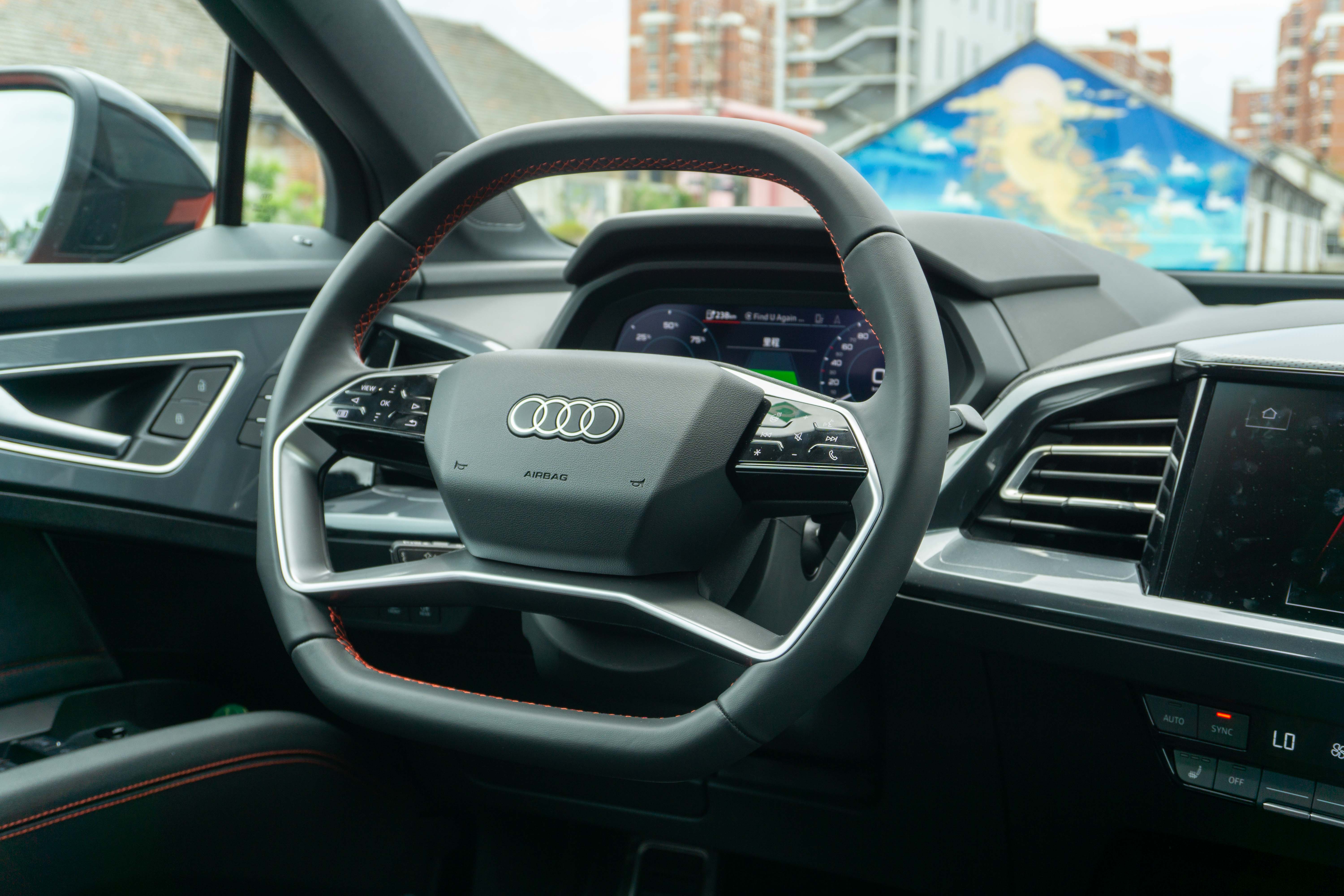
It is worth mentioning that the Q5 e-tron, as a pure electric vehicle, surprisingly has shift paddles, which are not used to operate the shifting mechanism, but to control power recovery.
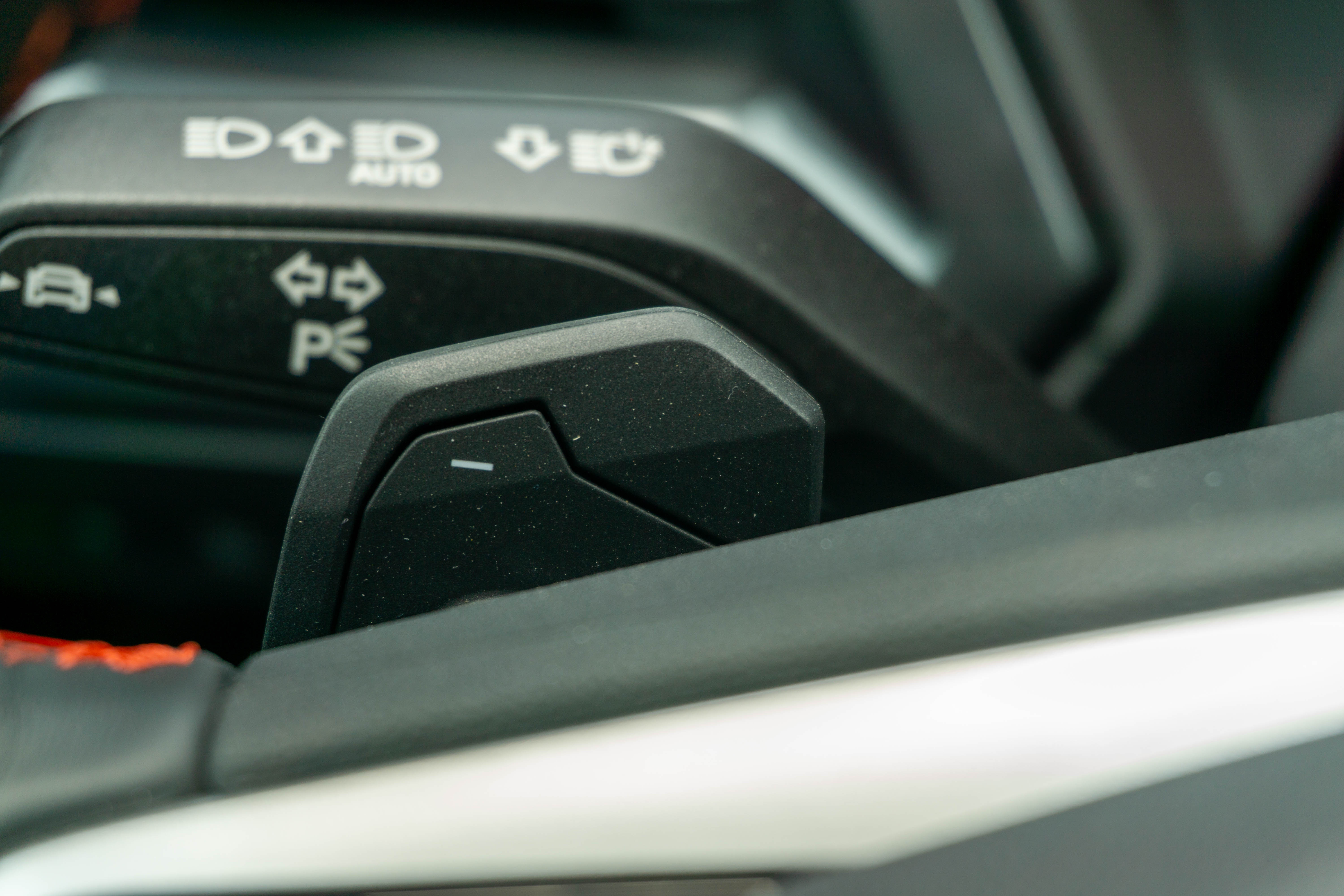
It should be noted that the power recovery of the Q5 e-tron’s shift paddles is only effective in D gear, and it is single-use. In other words, after I press the shift paddle, the power recovery adjusts the recovery force according to my setting (3 gears can be adjusted). There will be no power recovery effect after stepping on the accelerator pedal again unless you use the shift paddle again.
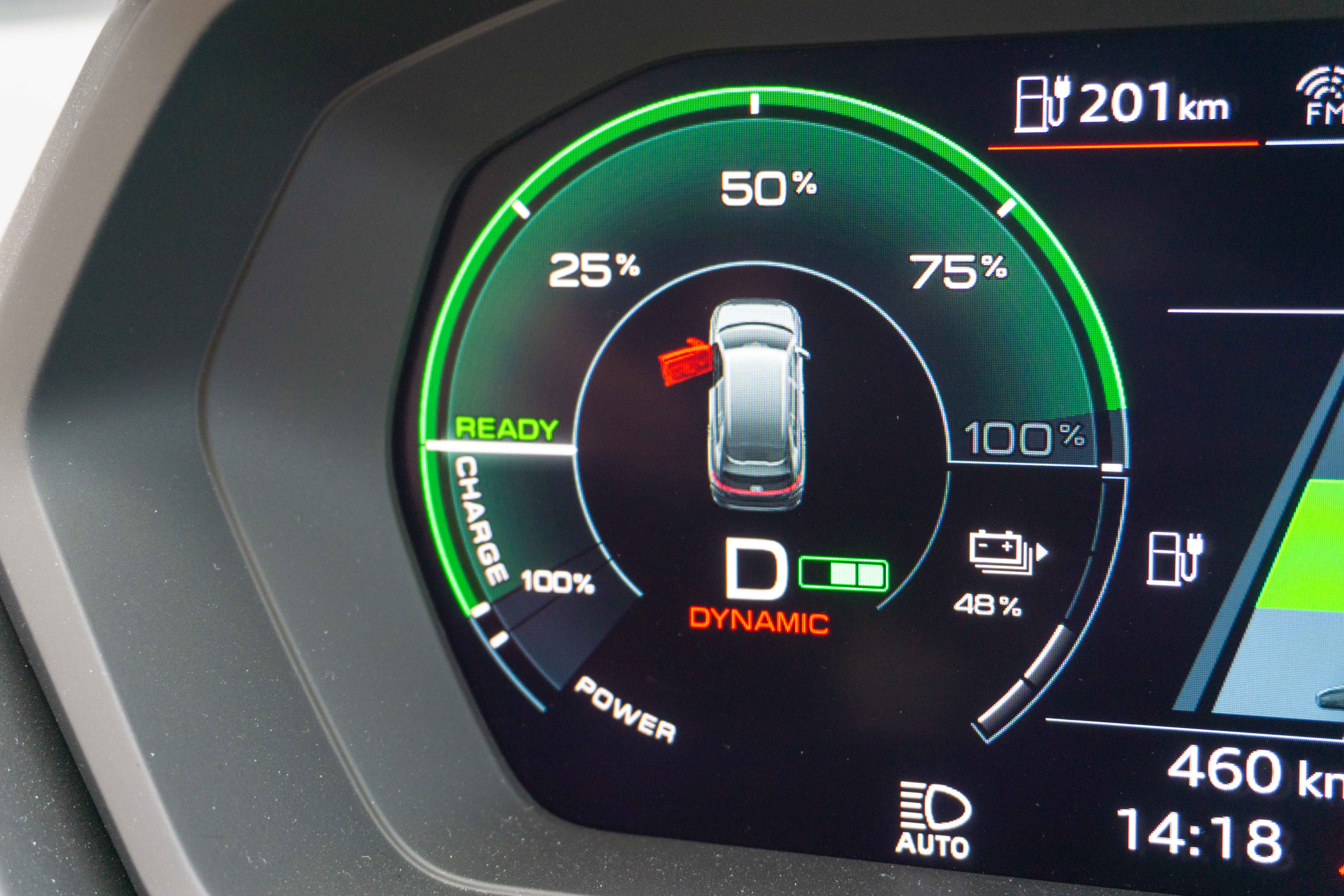
The shift paddles in D gear adjust the recovery force of single-use power recovery, and in my understanding, it simulates the feeling of shifting down in fuel vehicles. Firstly, the force of power recovery is adjusted by the negative sign shift lever. After three consecutive shifts, the force of the power recovery will significantly increase, which is very similar to the feeling of shifting down for three gears in fuel vehicles.Here is the English version of the Markdown text with the HTML tags preserved:
Small EVs that want to use regenerative braking can directly shift to B gear, and the intensity of regenerative braking will be automatically adjusted. The regenerative braking of Q5 e-tron is also an area where I think it is done better. In B gear mode, when the driver releases the accelerator pedal, the regenerative braking will not suddenly form an obvious drag sensation. Instead, the regenerative braking of Q5 e-tron shows linear growth and gradually releases the drag sensation.
Range Performance
During daily driving, only regenerative braking and range remind me that this is a pure electric vehicle. On the day of the test drive, the outdoor temperature was as high as 36.5 degrees Celsius, four adult males were sitting in the car, B gear was not activated, and the air conditioning was in the cooling and high wind mode for a long time. After driving 37.3 km in the city, on elevated roads and highways, the average energy consumption was 29.7 kWh/100 km.
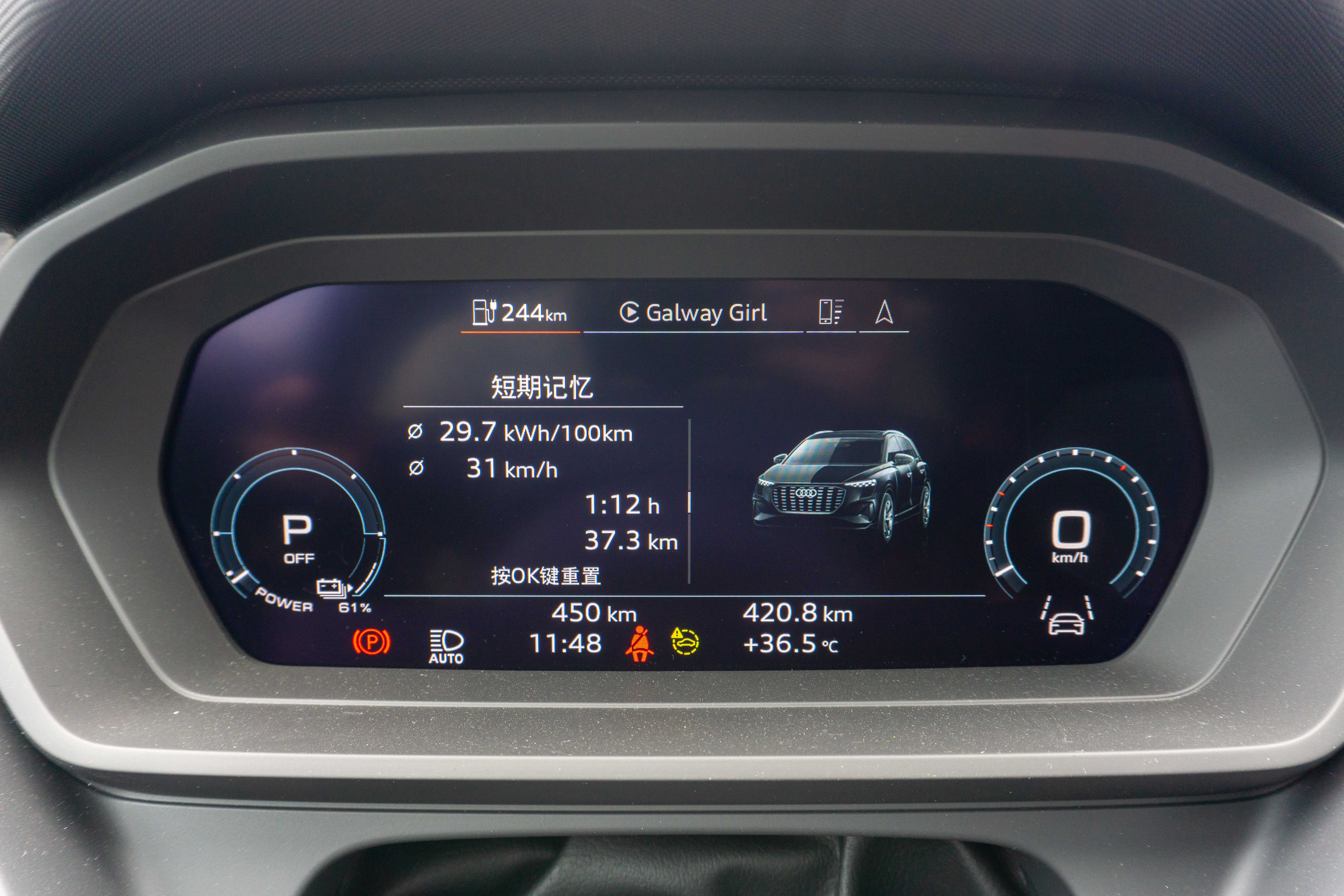
Calculated according to the total capacity of 83.4 kWh, this dual-motor Q5 e-tron can achieve a real range of 280 km under this condition. The theoretical range can be further improved if B gear mode is used throughout the journey.
Of course, the driving environment on that day was relatively extreme, and the conditions under normal use would be different. This is for reference only. If there is a chance later, we will also test an actual range with more reference value based on 42Test.
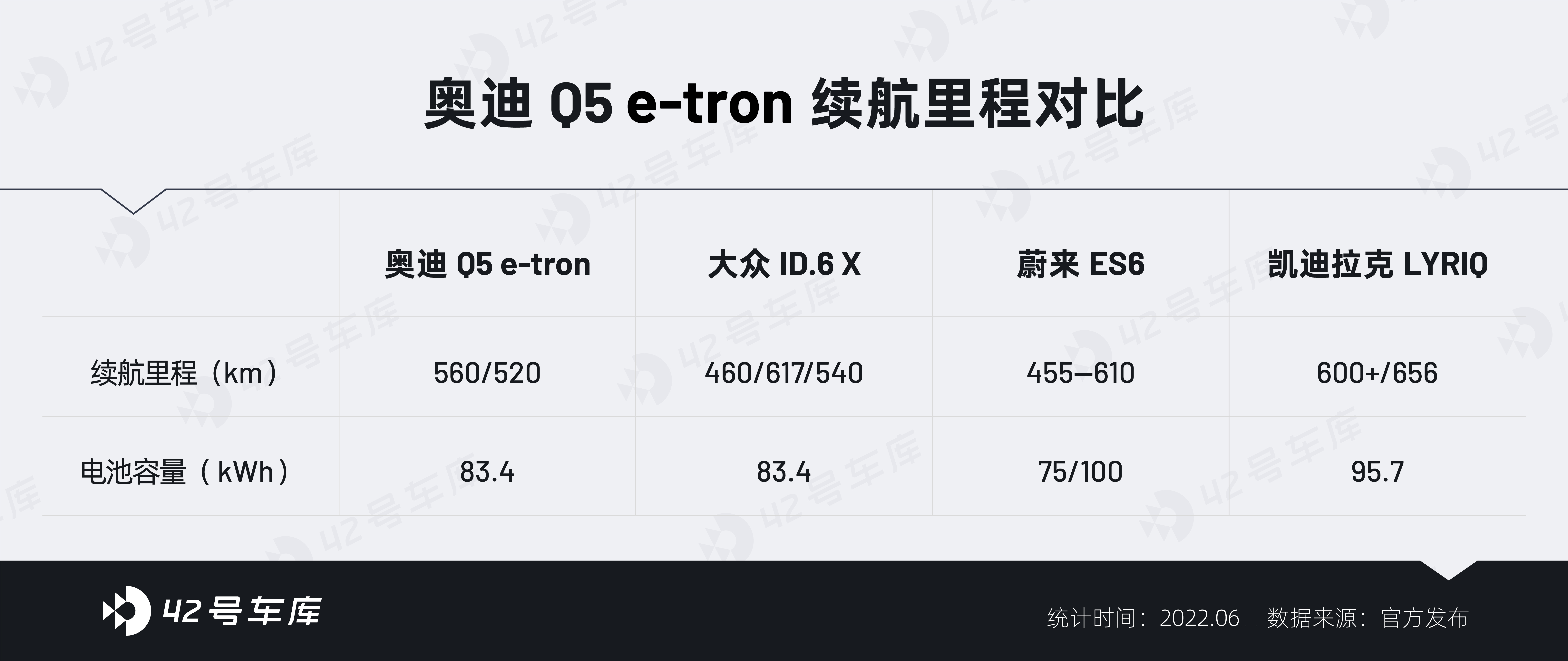
Advanced Driver Assistance
On the highway, I also experienced the advanced driver assistance system on the Q5 e-tron. In terms of hardware, it is equipped with the Mobileye EyeQ4 visual processing chip that is commonly used by Volkswagen Group, and three millimeter-wave radars, which can realize basic Level 2 advanced driving assistance.
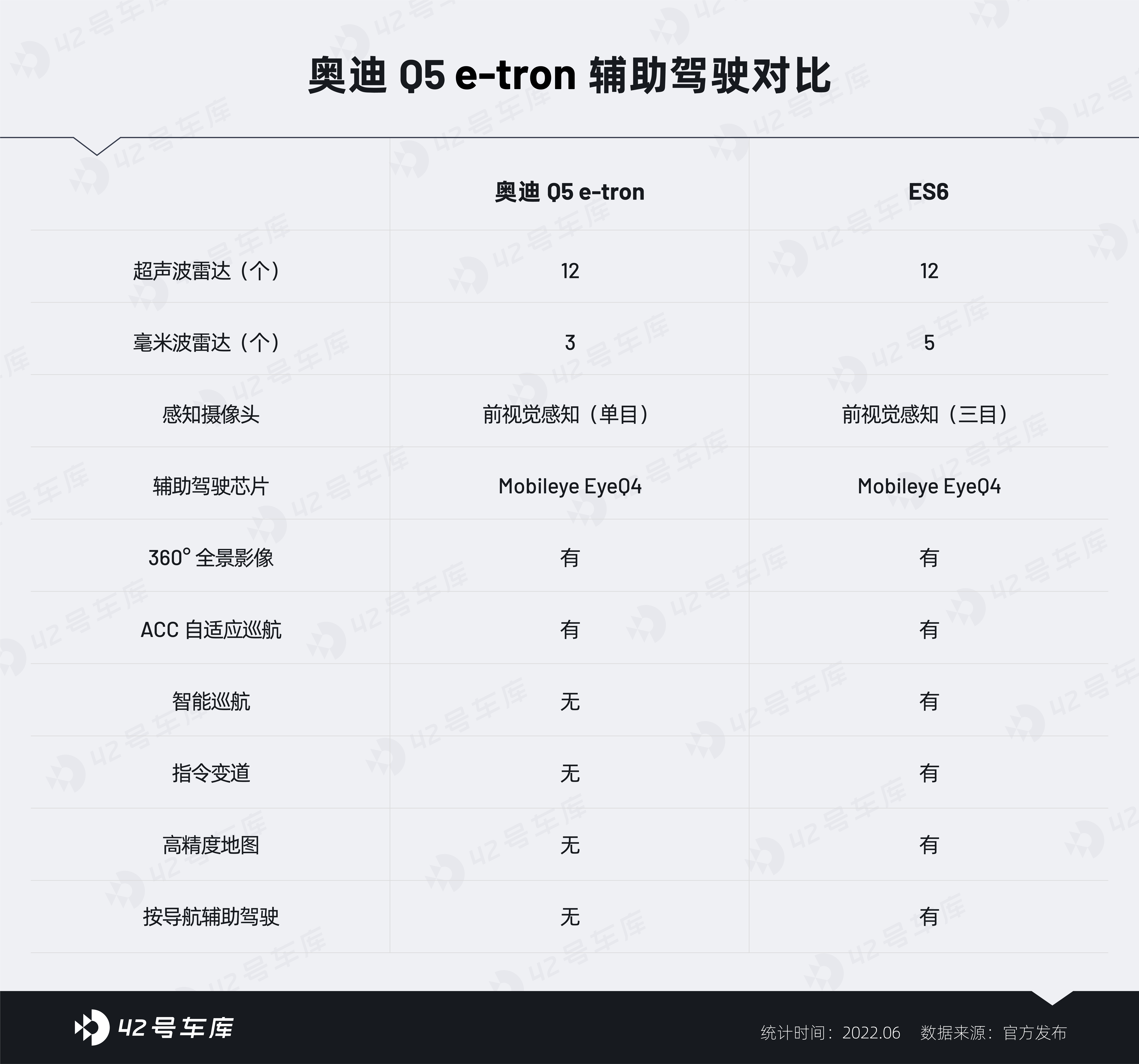
Although compared with the new forces at the same price, the Q5 e-tron cannot provide higher-level advanced driving assistance, its basic advanced driving assistance capability is strong enough and easy to use, with stable performance. After turning on lane-keeping and adaptive cruise control, the AR-HUD system will use green lines to outline the lane lines on both sides of the road and display the vehicle being followed to the driver.When a vehicle cuts in front, the HUD quickly identifies it and the vehicle’s deceleration response is sensitive. It immediately marks the front cutting-in vehicle with a yellow line and starts braking simultaneously to maintain the distance you set. In terms of the comprehensive experience of this advanced driving aid, it can provide the driver with a strong sense of trust and also compensate for the deficiency in visualized instruments.
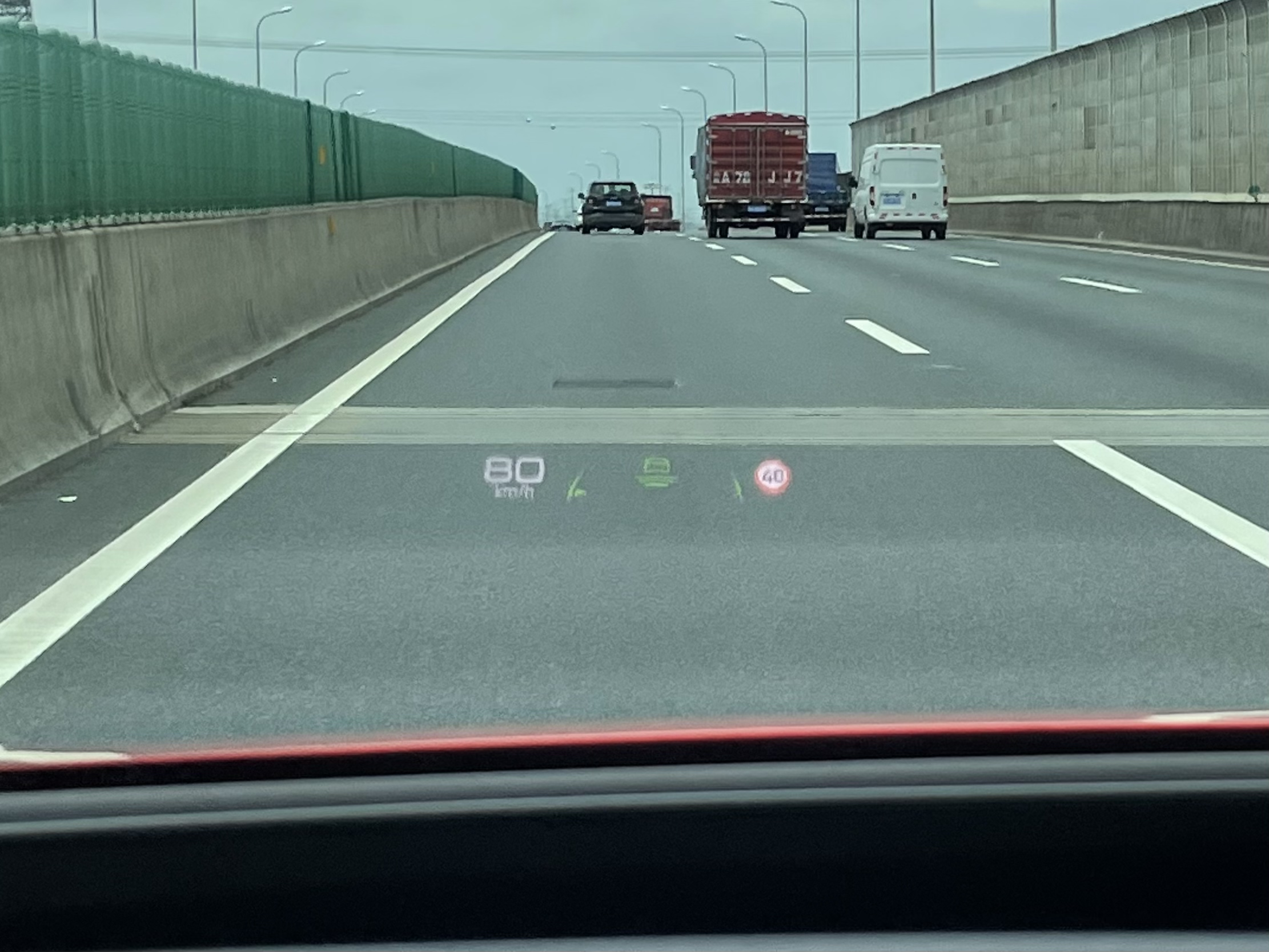
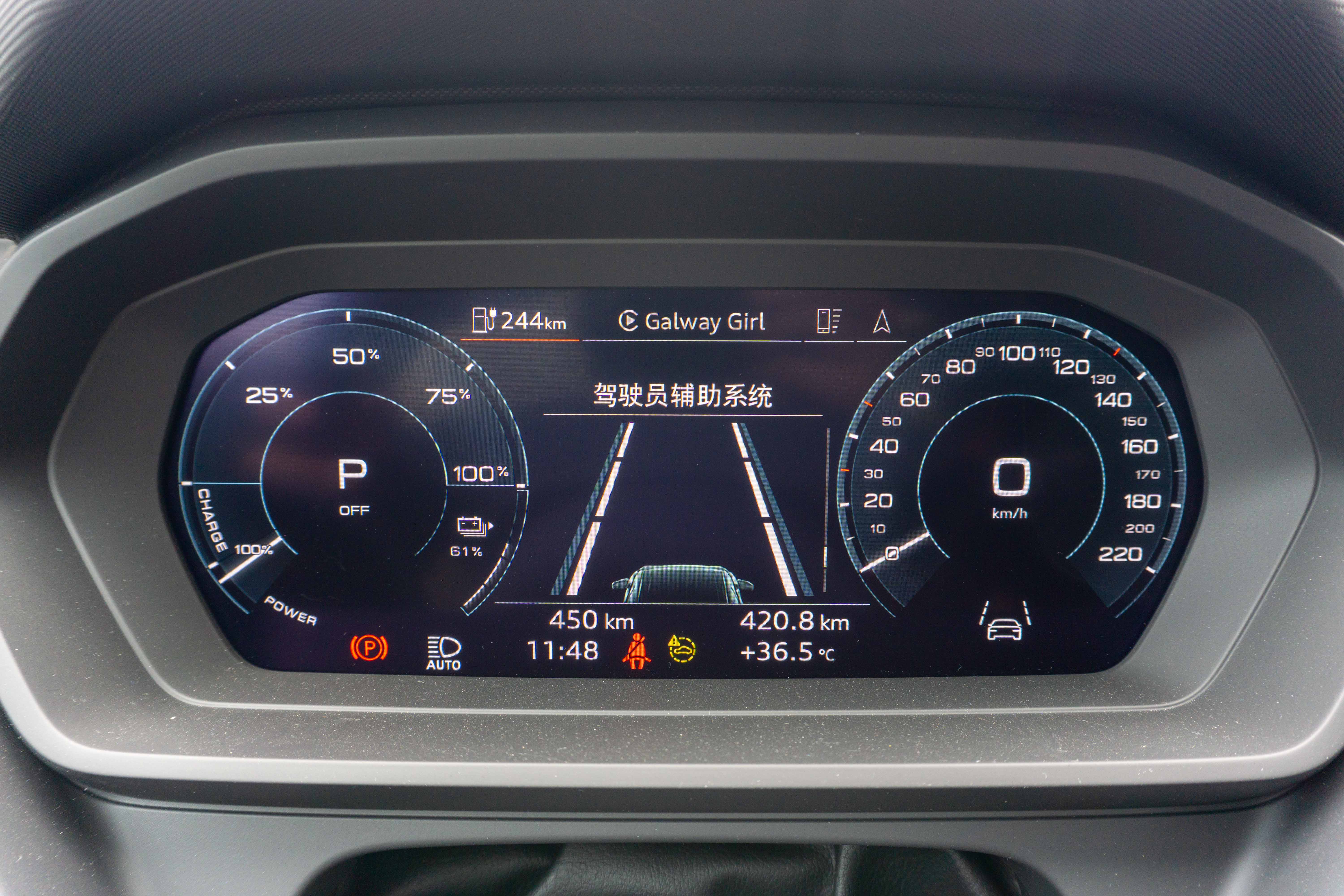
Conclusion
Overall, as the third pure electric model of Audi in China market, and the first pure electric model of SAIC Audi, Audi Q5 e-tron really lives up to Audi’s standards.
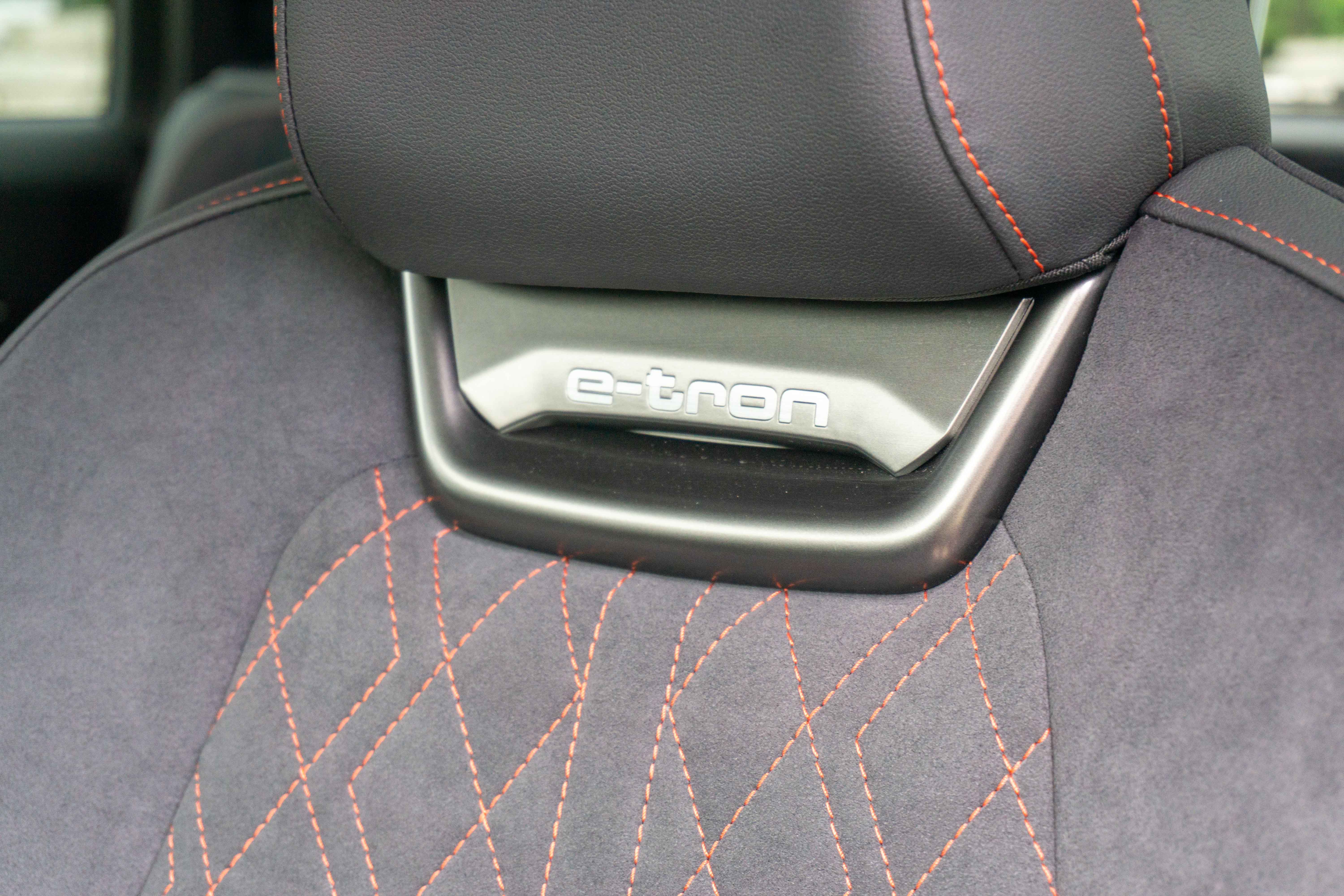
In terms of driving these mechanical qualities, Q5 e-tron is easy to drive; in terms of space flexibility, Q5 e-tron is convenient to use; in terms of interior design, Q5 e-tron is also exquisite. Several years ago, Q5 e-tron performing like this was a very cost-effective model, but with the entry of new forces, the game rules are gradually being changed.
At the current stage, although advanced driving aids and intelligent cockpits are not yet critical configurations that affect everyone’s car purchasing decisions, the number of people who value them is steadily increasing. This also means that users of models without advanced driving aids and intelligent cockpits are slowly losing out.
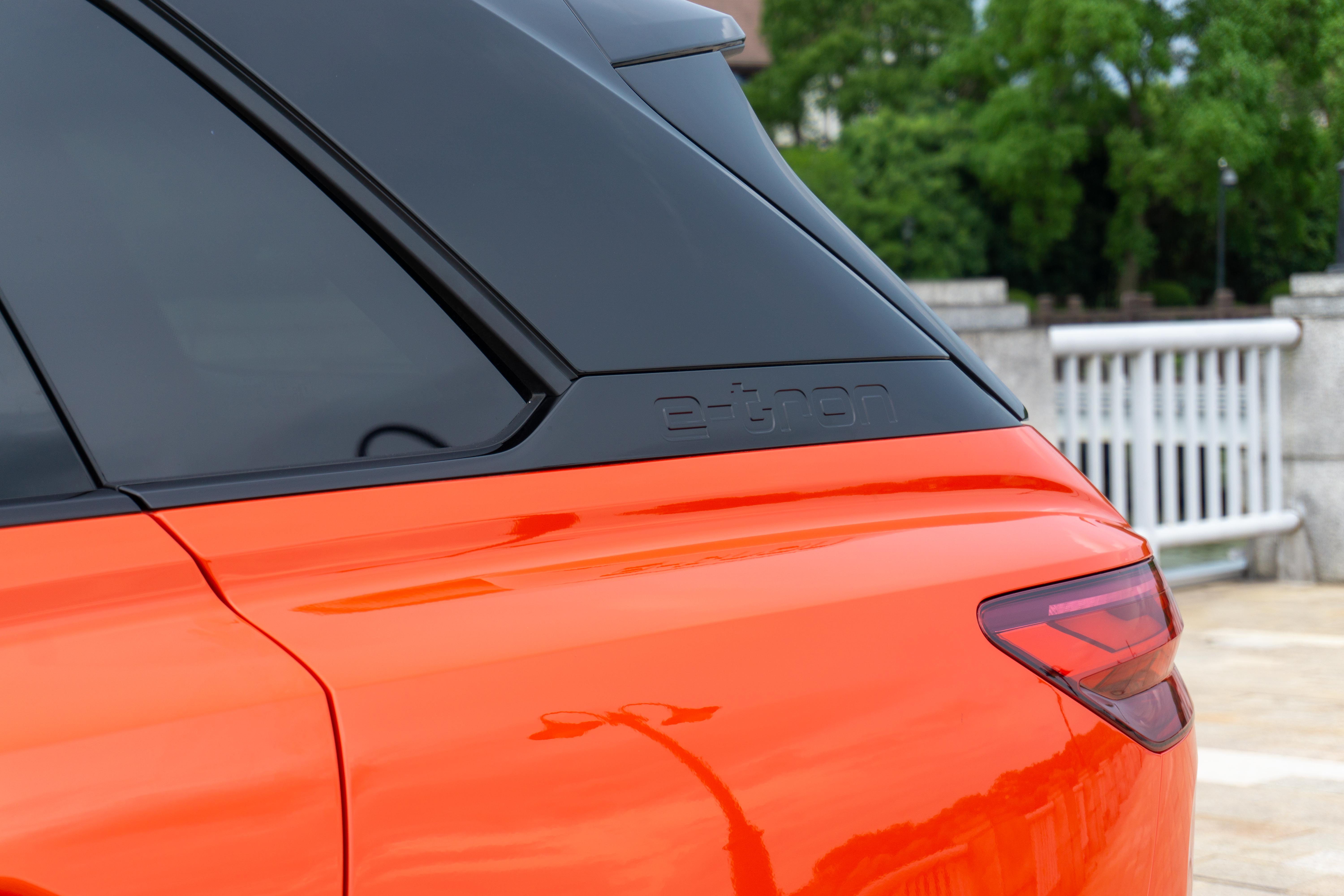
We hope that new forces can have an excellent driving experience like Audi Q5 e-tron, but we also hope that Audi can be even smarter. Audi Q5 e-tron is a very balanced product, but it is also difficult to have surprises or new sensations on this car.
This article is a translation by ChatGPT of a Chinese report from 42HOW. If you have any questions about it, please email bd@42how.com.
